equity risk premium
description: the excess return that investing in the stock market is expected to provide over a risk-free rate
50 results
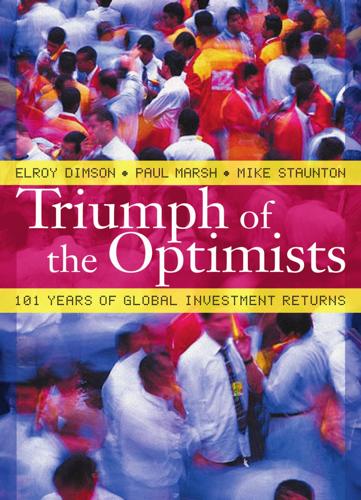
Triumph of the Optimists: 101 Years of Global Investment Returns
by
Elroy Dimson
,
Paul Marsh
and
Mike Staunton
Published 3 Feb 2002
When measured over a sufficiently long period, the difference between these two returns is called the equity risk premium. Chapter 1 Introduction and overview 9 In chapter 12, we provide evidence on the long-run magnitude of the equity risk premium, estimated relative to both bills and bonds. Our risk premia are lower than those that have been reported in previous studies of US and UK stock market performance. The differences arise from previous biases in index construction (for the United Kingdom), and (for both countries) from the use of a rather longer time frame, extending back to 1900. The equity risk premium is a very important economic variable. An estimate of the premium is central to projecting future investment returns, calculating the cost of equity capital, valuing companies and stocks, appraising capital investment projects, and determining fair rates of return.
…
For long-run comparisons, we use our full 101-year period from 1900–2000. Over the full 101 years, the annualized (geometric mean) US equity risk premium relative to bills was 5.8 percent, which is 0.9 percentage points lower than the annualized real return on US equities. Figure 12-2 shows the annualized US equity risk premium and US real equity returns, both measured over a sequence of rolling ten-year periods. The two series have tended to track each other. In recent years, the markedly positive real returns on treasury bills have caused the equity risk premium to be lower than the real return on equities. Figure 12-2: Rolling ten-year US equity real returns and risk premia relative to bills, 1909–2000 20 Percentage return Real equity returns Equity premium vs. bills 15 10 5 0 -5 1900 1910 1920 1930 1940 1950 1960 1970 1980 1990 2000 Triumph of the Optimists: 101 Years of Global Investment Returns 166 Figure 12-2 shows that even over intervals of a decade, there were periods when the ex post US risk premium was negative, most recently in the 1970s and early 1980s.
…
The bursting of the technology bubble, the rapid decline in economic growth rates, especially in the United States, and the advent of international terrorism raised questions about what we can expect for the future. We assert in this book that the single most important variable for making investment decisions is the equity risk premium, and we argue that high long-term returns on equities, relative to bonds, are unlikely to persist. Even after the setbacks of 2000–01, it is necessary to justify the relatively high rating of today’s stock markets in terms of a historically low forward-looking equity risk premium. For the investment strategist this raises the most fundamental question of all: Do investors realize that returns are likely to revert to more normal levels, or do current valuations embody exaggerated expectations based on an imperfect understanding of history?
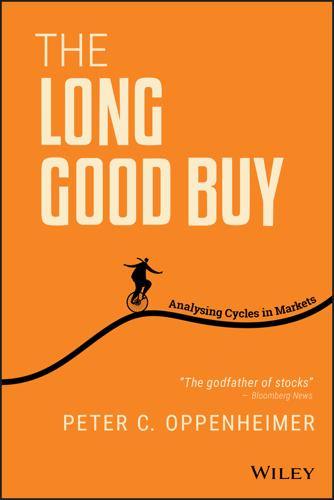
The Long Good Buy: Analysing Cycles in Markets
by
Peter Oppenheimer
Published 3 May 2020
Subtracting the return on bonds from the return on stocks left a so-called equity risk premium of over 6% per year, which could only be explained by a high degree of risk aversion. They went on to argue that other trade-offs between risk and reward in the economy suggest that investors did not require nearly as large a risk premium as they had been getting in practice, and that measures of risk aversion in other areas of financial behaviour are much lower, consistent with an ERP of 1% or less. They called this conundrum the equity risk premium puzzle. Since then, much of the research has found that the equity risk premium has varied over time. Bernstein (1997), for example, suggested that because equity valuations have changed over time, this could distort the required return.
…
For equity investors, the downside risks are higher than for many other investments, but so too are the upside potential returns. The achieved return in equities compared with bonds is often referred to as the ex post equity risk premium (ERP), or the actual reward over time that investors achieve by investing in equities relative to safe government bonds. This is different from the required equity risk premium, which is more a measure of likely relative future returns, or the expected premium of risk assets versus safe assets that an investor would require at any point in time to put her marginal investment into equities and not into bonds.
…
Table of Contents Cover Acknowledgements Note About the Author Preface Introduction Notes Part I: Lessons from the Past: What Cycles Look Like and What Drives Them Chapter 1: Riding the Cycle under Very Different Conditions Notes Chapter 2: Returns over the Long Run Returns over Different Holding Periods The Reward for Risk and the Equity Risk Premium The Power of Dividends Factors That Affect Returns for Investors The Impact of Diversification on the Cycle Notes Chapter 3: The Equities Cycle: Identifying the Phases The Four Phases of the Equity Cycle Mini/High-Frequency Cycles within the Investment Cycle The Interplay between the Cycle and Bond Yields Note Chapter 4: Asset Returns through the Cycle Assets across the Economic Cycle Assets across the Investment Cycle The Impact of Changes in Bond Yields on Equities Structural Shifts in the Value of Equities and Bonds Notes Chapter 5: Investment Styles over the Cycle Sectors and the Cycle Cyclical versus Defensive Companies Value versus Growth Companies Value, Growth and Duration Notes Part II: The Nature and Causes of Bull and Bear Markets: What Triggers Them and What to Look out For Chapter 6: Bear Necessities: The Nature and Shape of Bear Markets Bear Markets Are Not All the Same Cyclical Bear Markets Event-Driven Bear Markets Structural Bear Markets The Relationship between Bear Markets and Corporate Profits A Summary of Bear Market Characteristics Defining the Financial Crisis: A Structural Bear Market with a Difference Finding an Indicator to Flag Bear Market Risk Notes Chapter 7: Bull's Eye: The Nature and Shape of Bull Markets The ‘Super Cycle’ Secular Bull Market Cyclical Bull Markets Variations in the Length of Bull Markets Non-trending Bull Markets Notes Chapter 8: Blowing Bubbles: Signs of Excess Spectacular Price Appreciation … and Collapse Belief in a ‘New Era’ … This Time Is Different Deregulation and Financial Innovation Easy Credit New Valuation Approaches Accounting Problems and Scandals Notes Part III: Lessons for the Future: A Focus on the Post-Financial Crisis Era; What Has Changed and What It Means for Investors Chapter 9: How the Cycle Has Changed Post the Financial Crisis Three Waves of the Financial Crisis The Unusual Gap between Financial Markets and Economies All Boats Were Lifted by the Liquidity Wave The Unusual Drivers of the Return Lower Inflation and Interest Rates A Downtrend in Global Growth Expectations The Fall in Unemployment and Rise in Employment The Rise in Profit Margins Falling Volatility of Macro Variables The Rising Influence of Technology The Extraordinary Gap between Growth and Value Lessons from Japan Notes Chapter 10: Below Zero: The Impact of Ultra-Low Bond Yields Zero Rates and Equity Valuations Zero Rates and Growth Expectations Zero Rates: Backing Out Future Growth Zero Rates and Demographics Zero Rates and the Demand for Risk Assets Notes Chapter 11: The Impact of Technology on the Cycle The Ascent of Technology and Historical Parallels Technology and Growth in the Cycle How Long Can Stocks and Sectors Dominate?
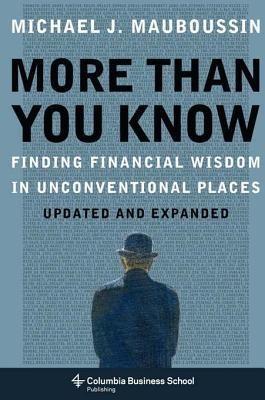
More Than You Know: Finding Financial Wisdom in Unconventional Places (Updated and Expanded)
by
Michael J. Mauboussin
Published 1 Jan 2006
With other factors held constant, higher cash-flow-to-net-income ratios and returns on capital support higher price-earnings ratios.4 The final factor that dictates the price-earnings ratio is the equity-risk premium, or the return that equity investors demand above and beyond a risk-free security. (The equity-risk premium itself appears to be nonstationary.) 5 While a number of factors come into play to determine the risk premium, including future growth estimates, the aggregate risk appetite of investors is certainly important. In periods of general optimism, equity-risk premiums shrink, and premiums expand when investors are cautious. The ebb and flow of investor risk appetite likely contributes to the nonstationarity of multiples.
…
I want to shine a light on the policies regarding these two variables. Explaining the Equity-Risk Premium One of finance’s big puzzles is why equity returns have been so much higher than fixed-income returns over time, given the respective risk of each asset class. From 1900 through 2006, stocks in the United States have earned a 5.7 percent annual premium over treasury bills (geometric returns). Other developed countries around the world have seen similar results.4 In a trailblazing 1995 paper, Shlomo Benartzi and Richard Thaler suggested a solution to the equity risk premium puzzle based on what they called “myopic loss aversion.”
…
network theory neuroscience Newton, Isaac New York Times niches Nicklaus, Jack Niederhoffer, Victor nonlinearity nonstationarity opportunities, limited options outperforming stocks percentage of probability of outsourcing overproduction and pruning ox weight problem Pandolfini, Bruce pari-mutuel betting pattern seeking payoff Pearson, Puggy per capita GDP growth Peters, Ellen pharmaceutical industry Philosophical Essay on Probabilities, A (Laplace) Pollock, Jackson Number Poor Charlie’s Almanack (Kaufman) poor-thinking problem portfolios: concentration construction fat tails and performance frequency of evaluation large cap leveraged performance vs. percentage of outperforming stocks portfolio turnover costs loss aversion stress and positive feedback power laws company-size distribution and fractals and investor understanding of Zipf’s law predictability, loss of prediction price changes, press reports and price-earnings ratios (P/Es) bounded parameters growth and returns nonstationarity of reversion to mean tangible vs. intangible capital tax rates and prices: expected value and S-curve phenomenon prioritizing priority rules probabilistic fields See also gambling; handicapping; investment philosophy probability expected value and extreme-return days frequency-based loss aversion and outperforming stocks propensity-based two-by-two matrix uncertainty and risk weighing probability dominance problem solving, collective mechanisms for process clockspeed Procter & Gamble product clockspeed propensities proportionality prospect theory psychology of investing compliance with requests deductive and inductive processes hindsight bias individual and collective decisions market, effect on stress tendencies of human behavior Tupperware parties See also investment philosophy Purcell, Ed “Pyramid of Numbers,” rationality Raup, David Raynor, Michael E. reciprocity recombination reductionism reflexivity requests, compliance with return on investment CFROI distribution of equity-risk premium growth and reversion to cost of capital total returns to shareholder (TRS) risk equity-risk premium explanation for risk-reward relationship rival and nonrival goods Rogers, Jim Roll, Richard Roman alphabet Romer, Paul roulette Rubin, Robert Ruefli, Timothy W. rules: adaptive simple Russo, Jay Ruth, Babe St. Petersburg Paradox Samuelson, Paul S&P S&P Index Committee sand-pile metaphor Santa Fe Institute (SFI) Sapolsky, Robert M.
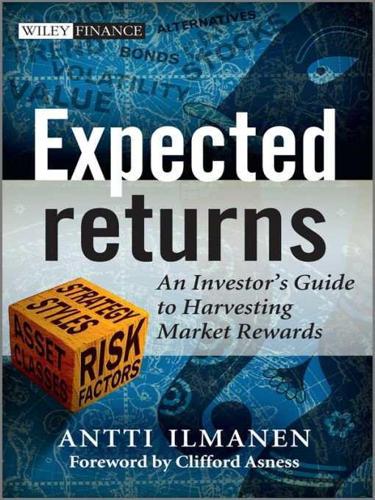
Expected Returns: An Investor's Guide to Harvesting Market Rewards
by
Antti Ilmanen
Published 4 Apr 2011
Antti Ilmanen Bad Homburg, November 2010 Abbreviations and acronyms AM Arithmetic Mean ATM At The Money (option) AUM Assets Under Management BEI Break-Even Inflation BF Behavioral Finance B/P Book/Price, book-to-market ratio BRP Bond Risk Premium, term premium B-S Black–Scholes C-P BRP Cochrane–Piazzesi Bond Risk Premium CAPM Capital Asset Pricing Model CAY Consumption wealth ratio CB Central Bank CCW Covered Call Writing CDO Collateralized Debt Obligation CDS Credit Default Swap CF Cash Flow CFNAI Chicago Fed National Activity Index CFO Chief Financial Officer CMD Commodity (futures) CPIyoy Consumer Price Inflation year on year CRB Commodity Research Bureau CRP Credit Risk Premium (over Treasury bond) CRRA Constant Relative Risk Aversion CTA Commodity Trading Advisor DDM Dividend Discount Model DJ CS Dow Jones Credit Suisse DMS Dimson–Marsh–Staunton D/P Dividend/Price (ratio), dividend yield DR Diversification Return E( ) Expected (conditional expectation) EMH Efficient Markets Hypothesis E/P Earnings/Price ratio, earnings yield EPS Earnings Per Share ERP Equity Risk Premium ERPB Equity Risk Premium over Bond (Treasury) ERPC Equity Risk Premium over Cash (Treasury bill) F Forward price or futures price FF Fama–French FI Fixed Income FoF Fund of Funds FX Foreign eXchange G Growth rate GARCH Generalized AutoRegressive Conditional Heteroskedasticity GC General Collateral repo rate (money market interest rate) GDP Gross Domestic Product GM Geometric Mean, also compound annual return GP General Partner GSCI Goldman Sachs Commodity Index H Holding-period return HF Hedge Fund HFR Hedge Fund Research HML High Minus Low, a value measure, also VMG HNWI High Net Worth Individual HPA House Price Appreciation (rate) HY High Yield, speculative-rated debt IG Investment Grade (rated debt) ILLIQ Measure of a stock’s illiquidity: average absolute daily return over a month divided by dollar volume IPO Initial Public Offering IR Information Ratio IRP Inflation Risk Premium ISM Business confidence index ITM In The Money (option) JGB Japanese Government Bond K-W BRP Kim–Wright Bond Risk Premium LIBOR London InterBank Offered Rate, a popular bank deposit rate LP Limited Partner LSV Lakonishok–Shleifer–Vishny LtA Limits to Arbitrage LTCM Long-Term Capital Management MA Moving Average MBS (fixed rate, residential) Mortgage-Backed Securities MIT-CRE MIT Center for Real Estate MOM Equity MOMentum proxy MSCI Morgan Stanley Capital International MU Marginal Utility NBER National Bureau of Economic Research NCREIF National Council of Real Estate Investment Fiduciaries OAS Option-Adjusted (credit) Spread OTM Out of The Money (option) P Price P/B Price/Book (valuation ratio) P/E Price/Earnings (valuation ratio) PE Private Equity PEH Pure Expectations Hypothesis PT Prospect Theory r Excess return R Real (rate) RE Real Estate REITs Real Estate Investment Trusts RWH Random Walk Hypothesis S Spot price, spot rate SBRP Survey-based Bond Risk Premium SDF Stochastic Discount Factor SMB Small Minus Big, size premium proxy SR Sharpe Ratio SWF Sovereign Wealth Fund TED Treasury–Eurodollar (deposit) rate spread in money markets TIPS Treasury Inflation-Protected Securities, real bonds UIP Uncovered Interest Parity (hypothesis) VaR Value at Risk VC Venture Capital VIX A popular measure of the implied volatility of S&P 500 index options VMG Value Minus Growth, equity value premium proxy WDRA Wealth-Dependent Risk Aversion X Cash flow Y Yield YC Yield Curve (steepness), term spread YTM Yield To Maturity YTW Yield To Worst Disclaimer Antti Ilmanen is a Senior Portfolio Manager at Brevan Howard, one of Europe’s largest hedge fund managers.
…
equity index options equity indices equity market returns cross-sectional relations earnings economic surprises emerging markets GDP growth rates long-term growth time series valuation equity momentum equity premium puzzle equity risk premium (ERP) business cycles DDM equity betas equity premium puzzle ERPB/C ex ante premia forward-looking measures global evidence growth high market valuations historical premium lower premium market timing subjective expectations survey-based expectations survey-based returns tactical forecasting terminology theories windfall gains equity risk premium over bond (ERPB) equity risk premium over cash (ERPC) equity value strategies asset classes contrarian blunders designing strategies dynamic strategies Fama—French portfolios fundamental indices historical performance questions about design sector neutrality short term style timing tweaks value vs. other indicators why value works ERP see equity risk premium ERPB see equity risk premium over bond ERPC see equity risk premium over cash errors in forecasting euros excess returns expected cash flow growth extrapolation by investors Fama, Eugene F.
…
equity index options equity indices equity market returns cross-sectional relations earnings economic surprises emerging markets GDP growth rates long-term growth time series valuation equity momentum equity premium puzzle equity risk premium (ERP) business cycles DDM equity betas equity premium puzzle ERPB/C ex ante premia forward-looking measures global evidence growth high market valuations historical premium lower premium market timing subjective expectations survey-based expectations survey-based returns tactical forecasting terminology theories windfall gains equity risk premium over bond (ERPB) equity risk premium over cash (ERPC) equity value strategies asset classes contrarian blunders designing strategies dynamic strategies Fama—French portfolios fundamental indices historical performance questions about design sector neutrality short term style timing tweaks value vs. other indicators why value works ERP see equity risk premium ERPB see equity risk premium over bond ERPC see equity risk premium over cash errors in forecasting euros excess returns expected cash flow growth extrapolation by investors Fama, Eugene F. see also Fama—French . . . Fama—French (FF) portfolios rational theories three-factor model Fama—French (FF) portfolios analysis equity value strategies migration dynamics style investing valuation ratios value growth outperformance VMG series Fed Model Federal Reserve Bank of Philadelphia feedback effects contrarian strategies endogenous return and risk momentum strategies procyclical responses risky assets feelings and moods, PT fees FF see Fama—French financial theories asset-pricing theory average realized returns complexity of reality costs equaling benefits evolving theories historical aspects return variation with time timing of losses volatility financialization fixed income FoF see fund of funds forecasts/forecasting analyst’s long-term earnings economist’s GDP errors see also prediction; tactical forecasting foreign exchange (FX) as an asset class carry strategies momentum strategies returns terminology seasonals see also currency . . .

Investing Demystified: How to Invest Without Speculation and Sleepless Nights
by
Lars Kroijer
Published 5 Sep 2013
Historically, whenever a currency has been an outlier it has performed poorly because of problems in that country (there are exceptions to this rule of thumb), and it is exactly in those cases that the protection of a diversified geographic exposure is of the greatest benefit to you.3 Expected returns: no promises, but expect 4–5% after inflation The return expectation from equity markets is driven by our view of the ‘equity risk premium’. The equity risk premium is a measure of how much extra the market expects to get paid for the additional risk associated with investing in equity markets over the minimal risk asset. This does not mean that stock markets will be particularly poor or attractive right now; it means that investors historically have demanded a premium for investing in risky equities, as opposed to less-riskier assets.
…
We also assume that investors expect to be paid a similar premium for investing in equities over safe government bonds in future as they have historically. The size of the equity risk premium is subject to much debate, but numbers in the order of 4–5% are often quoted. If you study the returns of the world equity markets over the past 100 years (see Table 5.1) the annual compounding rate of return for this period is close to this range. Of course it is impossible to know if the markets over that period have been particularly attractive or poor for equityholders compared to what the future has in store. The equity risk premium is not a law of nature, but simply an expectation of future returns, in this case based on what those markets achieved in the past, including the significant drawdowns that occurred.
…
Note that while the equity premium here is compared to short-term US bonds I would expect the same premium to other minimal risk currency government bonds because the real return expectation of short-term US government bonds is roughly similar to that of other AAA/AA countries like the UK, Germany, Japan, etc. Table 5.2 Expected future returns (including returns from dividends) (%) Real1 Risk2 World equities 4.5–5.5 20.00 Minimal risk asset 0.50 Equity risk premium 4–5 1After inflation. 2See Chapter 6 for a discussion of issues with risk measures. For those who consider these expected returns disappointing, I’m sorry. Writing higher numbers in a book or spreadsheet won’t make it true. Some would even suggest that expecting equity markets to be as favourable in the future as in the past is wishful thinking.
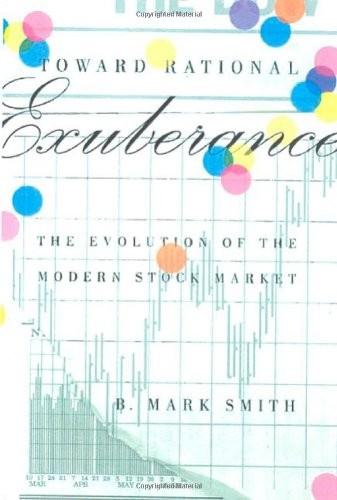
Toward Rational Exuberance: The Evolution of the Modern Stock Market
by
B. Mark Smith
Published 1 Jan 2001
Similarly, Greenspan is now apparently more receptive to the argument that stocks are not actually as risky as they have appeared to be (or actually were) in the past. He seems to be willing to consider the possibility that the equity risk premium has been too high historically, which is another way of saying that stock prices in the past have been too low. A declining equity risk premium can account for much of the spectacular rise in stock prices at the end of the twentieth century. The evolution of Greenspan’s views parallels, with a substantial lag, the evolution of the stock market itself. Recall from chapter 9 that as early as 1959, Greenspan warned of the danger of “overexuberance” in the market that could create a “speculative bubble” that would inevitably burst.
…
In other words, people making long-range investments to fund their retirements should be (and likely have been) willing to accept a lower equity risk premium. But as those same investors approach retirement, their time horizons change. Short-term risk becomes more significant to people who are more interested in capital preservation than capital appreciation. As the massive baby-boom generation nears retirement, it is quite likely that members of that generation will demand higher, not lower, risk premiums. This has negative implications for stock prices, and certainly undermines the Glassman-Hassert argument that the equity risk premium will continue to decline. (Note that this reasoning is significantly different from the oft-repeated prediction that the stock market will falter once baby boomers begin to consume their retirement savings rather than accumulating more.
…
The other principal “bull” argument is that rising stock prices at the turn of the twenty-first century reflect a belated recognition by investors that stocks have been badly underpriced in the past. This argument is made most fervently by James Glassman and Kevin Hassert in their book Dow 36,000. Glassman and Hassert believe that the “equity risk premium”—the extra return, above the rate paid by risk-free government bonds, that stock investors receive as compensation for taking the risks inherent in investing in stocks—has historically been much too high. This is another way of saying that stocks are not as risky as they have seemed to be, or that they have become less risky over time, or both.
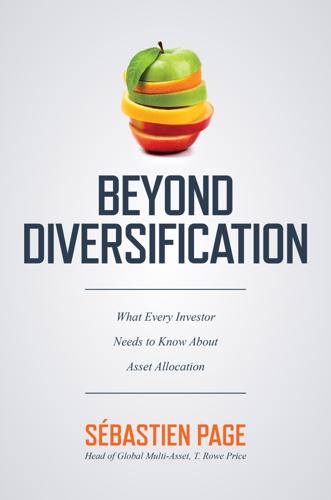
Beyond Diversification: What Every Investor Needs to Know About Asset Allocation
by
Sebastien Page
Published 4 Nov 2020
Bond managers tend to have a pessimistic bias on risk assets, so perhaps it’s not surprising that my old employer, PIMCO, expects equity returns to be quite low going forward. In early 2018, my ex-colleagues Ravi Mattu and Vasant Naik published a valuation-informed view that the equity risk premium should be about 2.5%, with an additional warning: “Equities may deliver even lower excess returns than the current ex-ante equity risk premium (ERP) of 2.5%, since a reasonable fair value for the ERP may be slightly higher.”8 (I assume they mean that in order to get a higher ERP, valuations will have to come down.) If we assume a nominal risk-free rate of 2%, we get an expected return of 4.5%.
…
Another reason for Shiller’s ultralow forecast may be that he doesn’t simply invert the ratio—he adjusts the estimate based on a regression model. As much as we try to keep it simple, it’s never easy to forecast returns. Markowitz and Sharpe seem to disagree on the theory behind CAPM, even though it’s one of the most important foundations of modern finance. And here, two equally credible thought leaders disagree, this time on the equity risk premium, a key input to the model. I suspect the Shiller and Siegel estimates represent bookends—from one of the most bearish to one of the most bullish forecasts. Because we want to build an estimate for global equity markets (CAPE ratios are closer to 20 outside the United States versus 30 in the United States),7 and for other reasons that I’ll explain shortly when we revisit the CAPE debate, my recommendation is to tilt the forecast toward Siegel’s estimate.
…
TABLE 1.1 CAPM Expected Returns The return forecasts shown in the table are depressingly low. Yet this shouldn’t be a surprise, given the low level of rates and the low expected market risk premium due to high valuations. Following the 2020 pandemic crisis, as panic runs high, valuations have become more attractive, and the equity risk premium has likely increased. US rates have hit their zero bound. As I’m about to submit my manuscript for this book, it remains difficult to assess the impact of the economic heart attack. But it’s reasonable to expect that as we recover, risk assets will deliver relatively high returns. A more surprising outcome may be that the numbers aren’t entirely consistent with the return expectations I put in the model for the world equity market (6.2%) and for the world bond market (1.9%).
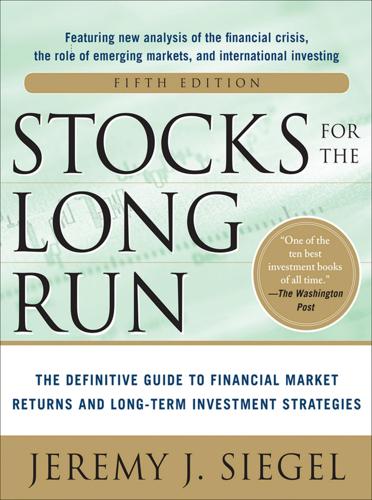
Stocks for the Long Run 5/E: the Definitive Guide to Financial Market Returns & Long-Term Investment Strategies
by
Jeremy Siegel
Published 7 Jan 2014
If we assume that the long-run real rate settles at 2 percent, about 1 to 1½ percent below its long-run average, then a 3 percent equity premium will require a 5 percent real return on stocks, which, as we noted above, arises from a 20 P/E multiple. The Equity Risk Premium The decline in transaction costs and the decline in discount rates may each be used to justify a higher P/E ratio. Yet another reason is that the equity risk premium itself may shrink. In 1985, economists Rajnish Mehra and Edward Prescott published a paper entitled “The Equity Premium: A Puzzle.”20 In their work they showed that given the standard models of risk and return that economists had developed over the years, one could not explain the large gap between the returns on equities and fixed-income assets found in the historical data.
…
Conclusion Appendix: History of the Tax Code Chapter 10 Sources of Shareholder Value Earnings and Dividends Discounted Cash Flows Sources of Shareholder Value Historical Data on Dividends and Earnings Growth The Gordon Dividend Growth Model of Stock Valuation Discount Dividends, Not Earnings Earnings Concepts Earnings Reporting Methods Operating Earnings and NIPA Profits The Quarterly Earnings Report Conclusion Chapter 11 Yardsticks to Value the Stock Market An Evil Omen Returns Historical Yardsticks for Valuing the Market Price/Earnings Ratio and the Earnings Yield The Aggregation Bias The Earnings Yield The CAPE Ratio The Fed Model, Earnings Yields, and Bond Yields Corporate Profits and GDP Book Value, Market Value, and Tobin’s Q Profit Margins Factors That May Raise Future Valuation Ratios A Fall in Transaction Costs Lower Real Returns on Fixed-Income Assets The Equity Risk Premium Conclusion Chapter 12 Outperforming the Market The Importance of Size, Dividend Yields, and Price/Earnings Ratios Stocks That Outperform the Market What Determines a Stock’s Return? Small- and Large-Cap Stocks Trends in Small-Cap Stock Returns Valuation: “Value” Stocks Offer Higher Returns Than “Growth” Stocks Dividend Yields Other Dividend-Yield Strategies Price/Earnings Ratios Price/Book Ratios Combining Size and Valuation Criteria Initial Public Offerings: The Disappointing Overall Returns on New Small-Cap Growth Companies The Nature of Growth and Value Stocks Explanations of Size and Valuation Effects The Noisy Market Hypothesis Liquidity Investing Conclusion Chapter 13 Global Investing Foreign Investing and Economic Growth Diversification in World Markets International Stock Returns The Japanese Market Bubble Stock Risks Should You Hedge Foreign Exchange Risk?
…
Chapter 22 Behavioral Finance and the Psychology of Investing The Technology Bubble, 1999 to 2001 Behavioral Finance Fads, Social Dynamics, and Stock Bubbles Excessive Trading, Overconfidence, and the Representative Bias Prospect Theory, Loss Aversion, and the Decision to Hold on to Losing Trades Rules for Avoiding Behavioral Traps Myopic Loss Aversion, Portfolio Monitoring, and the Equity Risk Premium Contrarian Investing and Investor Sentiment: Strategies to Enhance Portfolio Returns Out-of-Favor Stocks and the Dow 10 Strategy PART V BUILDING WEALTH THROUGH STOCKS Chapter 23 Fund Performance, Indexing, and Beating the Market The Performance of Equity Mutual Funds Finding Skilled Money Managers Persistence of Superior Returns Reasons for Underperformance of Managed Money A Little Learning Is a Dangerous Thing Profiting from Informed Trading How Costs Affect Returns The Increased Popularity of Passive Investing The Pitfalls of Capitalization-Weighted Indexing Fundamentally Weighted Versus Capitalization-Weighted Indexation The History of Fundamentally Weighted Indexation Conclusion Chapter 24 Structuring a Portfolio for Long-Term Growth Practical Aspects of Investing Guides to Successful Investing Implementing the Plan and the Role of an Investment Advisor Concluding Comment Notes Index FOREWORD In July 1997 I called Peter Bernstein and said I was going to be in New York and would love to lunch with him.
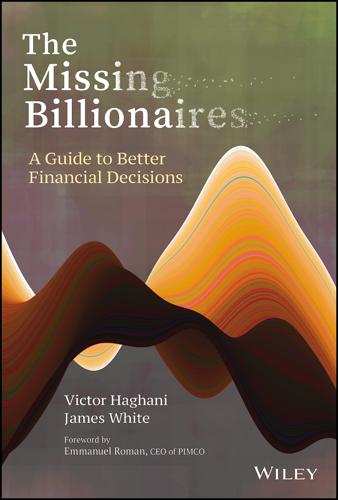
The Missing Billionaires: A Guide to Better Financial Decisions
by
Victor Haghani
and
James White
Published 27 Aug 2023
It may be that estimating the return distributions of high‐yield bonds or other more equity‐like debt investments is more tractable, but here too is an area that rewards specialized knowledge and lacks a high quality, general framework for thinking about risk and returns. For taxable investors, it is generally significantly more tax‐efficient to earn the equity risk premium through owning equities directly. In most tax regimes, equities enjoy preferential capital gains treatment and the possibility of tax deferral. Trying to earn the equity risk premium through the credit spread is usually less tax efficient, as income from corporate bonds is typically taxed when earned and at higher ordinary income tax rates.f US Treasury bonds are also generally more tax efficient than corporate bonds.
…
For a more detailed description of these positive odds opportunities (or, in their words, “fantastic expected rates of return offered by certain lottery drawings”) along with a more detailed discussion of the ideas in this chapter, see “Finding Good Bets in the Lottery and Why You Shouldn’t Take Them,” by Aaron Abrams and Skip Garibaldi, 2010. 20 The Equity Risk Premium Puzzle What level of interest rates and equity returns can we reasonably expect from the economy? This is the animating question of the Equity Risk Premium puzzle (ERP), which has been keenly studied and debated since the 1980s. The heart of the “puzzle” is that the long‐term realized returns of stocks and bonds simply don't agree very well with the equilibrium predictions from the most commonly used economic models.
…
If we assume real earnings growth of 1.5% per annum with volatility of 6%, and we assume individual risk‐aversion of 2 and time preference of 2%, the model yields real interest rates of about 4% and equity risk premium of less than 1%. In contrast, historical real interest rates have been lower (less than 1% for T‐bills) and equity risk premia much higher (5%–7%). This is the heart of the Equity Risk Premium puzzle. What could be going on here? One thing that jumps out right away is that real corporate earnings might have a volatility of 6% per annum, but equities sure don't—more like 16%–20%. But if we put 18% volatility into the model, keeping the other inputs the same, we get a risk premium of 7%, which is more in line with history, but a real interest rate of –5%, quite far from average historical real interest rates.
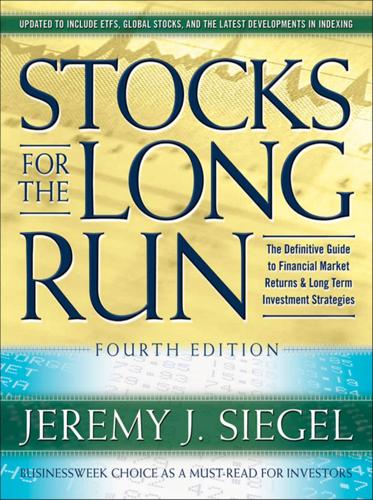
Stocks for the Long Run, 4th Edition: The Definitive Guide to Financial Market Returns & Long Term Investment Strategies
by
Jeremy J. Siegel
Published 18 Dec 2007
It is not a coincidence that the highest 30-year average eq16 For a rigorous analysis of the equity premium, see Jeremy Siegel and Richard Thaler, “The Equity Premium Puzzle,” Journal of Economic Perspectives, vol. 11, no. 1 (Winter 1997), pp. 191–200, and more recently, “Perspectives on the Equity Risk Premium,” Financial Analysts Journal, vol. 61, no. 1 (November/December 2005), pp. 61–73, reprinted in Rodney N. Sullivan, Bold Thinking on Investment Management, CFA Institute, 2005, pp. 202–217. FIGURE 1–5 Equity Risk Premium (30-Year Compound Annual Moving Average, 1831 through December 2006) 14% Stock Minus Bond Returns Stock Minus Bill Returns 12% 10% 8% 6% 4% 2% 0% -2% 1831 1841 1851 1861 1871 1881 1891 1901 1911 1921 1931 1941 1951 1961 1971 1981 1991 2001 18 PART 1 The Verdict of History uity return occurred in a period marked by very low real returns on bonds.
…
73 Conclusion 74 Appendix: History of the Tax Code 74 Chapter 6 The Investment View of Stocks: How Fickle Markets Overwhelm Historical Facts 77 Early Views of Stock Investing 79 The Influence of Smith’s Work 80 Common Stock Theory of Investment 82 A Radical Shift in Sentiment 82 The Postcrash View of Stock Returns 83 The Beginning of the Great Bull Market 85 Warnings of Overspeculation 86 The Top of the Bubble 88 The Bear Market and Its Aftermath 89 PART 2 VALUATION, STYLE INVESTING, AND GLOBAL MARKETS Chapter 7 Stocks: Sources and Measures of Market Value 95 An Evil Omen Returns 95 Valuation of Cash Flows from Stocks 97 Sources of Shareholder Value 98 The Value of Stock as Related to Dividend Policy 100 viii Earnings Concepts 102 Earnings Reporting Methods 102 The Employee Stock Option Controversy 104 Controversies in Accounting for Pension Costs 105 Standard & Poor’s Core Earnings 107 Earnings Quality 108 Downward Biases in Earnings 109 Historical Yardsticks for Valuing the Market 110 Price-Earnings Ratios 110 The Fed Model, Earnings Yields, and Bond Yields 113 Corporate Profits and National Income 115 Book Value, Market Value, and Tobin’s Q 117 Market Value Relative to the GDP and Other Ratios 119 Conclusion 121 Chapter 8 The Impact of Economic Growth on Market Valuation and the Coming Age Wave 123 GDP Growth and Stock Returns 124 The Gordon Dividend Growth Model 126 Economic Growth and Stock Returns 127 Factors That Raise Valuation Ratios 128 Factors That Impact Expected Returns 129 The Equity Risk Premium 130 More Stable Economy 131 New Justified P-E Ratios 132 The Age Wage 133 Demography Is Destiny 134 The Bankruptcy of Government and Private Pension Systems 135 Reversal of a Century-Long Trend 135 The Global Solution: An Opportunity to Make a Trade 136 Attraction of U.S. Capital 137 Conclusion 138 CONTENTS CONTENTS ix Chapter 9 Outperforming the Market: The Importance of Size, Dividend Yields, and Price-to-Earnings Ratios 139 Stocks That Outperform the Market 139 Small- and Large-Cap Stocks 141 Trends in Small-Cap Stock Returns 142 Valuation 144 Value Stocks Offer Higher Returns Than Growth Stocks 144 Dividend Yields 145 Other Dividend Yield Strategies 147 Price-to-Earnings (P-E) Ratios 149 Price-to-Book Ratios 150 Combining Size and Valuation Criteria 152 Initial Public Offerings: The Disappointing Overall Returns on New Small-Cap Growth Companies 154 The Nature of Growth and Value Stocks 157 Explanations of Size and Valuation Effects 157 The Noisy Market Hypothesis 158 Conclusion 159 Chapter 10 Global Investing and the Rise of China, India, and the Emerging Markets 161 The World’s Population, Production, and Equity Capital 162 Cycles in Foreign Markets 164 The Japanese Market Bubble 165 The Emerging Market Bubble 166 The New Millennium and the Technology Bubble 167 Diversification in World Markets 168 Principles of Diversification 168 “Efficient” Portfolios: Formal Analysis 168 Should You Hedge Foreign Exchange Risk?
…
318 Chapter 19 Behavioral Finance and the Psychology of Investing 319 The Technology Bubble, 1999 to 2001 320 Behavioral Finance 322 Fads, Social Dynamics, and Stock Bubbles 323 Excessive Trading, Overconfidence, and the Representative Bias 325 Prospect Theory, Loss Aversion, and Holding On to Losing Trades 328 Rules for Avoiding Behavioral Traps 331 Myopic Loss Aversion, Portfolio Monitoring, and the Equity Risk Premium 332 Contrarian Investing and Investor Sentiment: Strategies to Enhance Portfolio Returns 333 Out-of-Favor Stocks and the Dow 10 Strategy 335 PART 5 BUILDING WEALTH THROUGH STOCKS Chapter 20 Fund Performance, Indexing, and Beating the Market 341 The Performance of Equity Mutual Funds 342 Finding Skilled Money Managers 346 xiv Persistence of Superior Returns 348 Reasons for Underperformance of Managed Money 348 A Little Learning Is a Dangerous Thing 349 Profiting from Informed Trading 349 How Costs Affect Returns 350 The Increased Popularity of Passive Investing 351 The Pitfalls of Capitalization-Weighted Indexing 351 Fundamentally Weighted versus Capitalization-Weighted Indexation 353 The History of Fundamentally Weighted Indexation 356 Conclusion 357 Chapter 21 Structuring a Portfolio for Long-Term Growth 359 Practical Aspects of Investing 360 Guides to Successful Investing 360 Implementing the Plan and the Role of an Investment Advisor 363 Concluding Comment 364 Index 367 CONTENTS F O R E W O R D Some people find the process of assembling data to be a deadly bore.
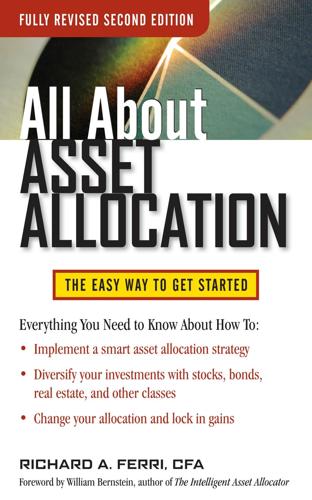
All About Asset Allocation, Second Edition
by
Richard Ferri
Published 11 Jul 2010
Figure 8-5 illustrates the rolling 12-month correlation between excess return on investment-grade bonds and excess return on equities (credit risk premium to equity risk premium). The credit risk premium is calculated by subtracting the monthly return on the Barclays Capital Intermediate-Term Treasury Index 1–10 Years from the return on the Barclays Capital Intermediate-Term Credit Index 1–10 Years. The equity risk premium is calculated by subtracting the return on Treasury bills from the return on the CRSP 1–10 Total Stock Market Index. Measuring the correlation between these two returns tells us if there is a relationship between them. The average 12-month correlation between the credit risk premium and the equity risk premium suggests that at times the credit risk is related to the same factors affecting equity returns and that those times are particularly strong at the onset of an economic Fixed-Income Investments FIGURE 155 8-5 12-Month Rolling Correlation between the Credit Risk Premium and the Equity Risk Premium 1.0 0.8 0.5 0.3 0.0 ⫺0.3 ⫺0.5 The correlation between two risk premiums: ⫺0.8 Corporate bonds (less Treasury returns) and the U.S. total stock market return (less T-bill returns) ⫺1.0 Dec-90 Dec-95 Dec-00 Dec-05 Dec-10 downturn.
…
This is all reflected in greater price volatility in stocks over bonds. Figure 11-6 illustrates the rolling 10-year equity risk premium based on the 10-year return on stocks as measured by the CRSP 1–10 Total U.S. Stock Market Index over the 10-year return on longterm corporate bonds as measured by the Barclays Long-Term Corporate Bond Index. The figure reflects the extra amount of return (or loss) that U.S. common stock returned over corporate bonds in rolling 10-year periods. CHAPTER 11 230 FIGURE 11-6 Rolling 10-Year Equity Risk Premium over Corporate Bonds 20% Excess return of stocks over long-term corporate bonds 10-year moving average 15% 10% 5% Long-term Average 0% ⫺5% 2009 2005 2001 1997 1993 1989 1985 1981 1977 1973 1969 1965 1961 1957 1953 1949 1945 1941 ⫺15% 1937 ⫺10% The equity risk premium is far from consistent.
…
CHAPTER 11 230 FIGURE 11-6 Rolling 10-Year Equity Risk Premium over Corporate Bonds 20% Excess return of stocks over long-term corporate bonds 10-year moving average 15% 10% 5% Long-term Average 0% ⫺5% 2009 2005 2001 1997 1993 1989 1985 1981 1977 1973 1969 1965 1961 1957 1953 1949 1945 1941 ⫺15% 1937 ⫺10% The equity risk premium is far from consistent. The difference between the 10-year annualized returns from stocks and bonds has varied from about minus 8 percent to plus 18 percent. If only there were a way to time these things! But there is not. Consequently, a long-term strategic position must be taken, with a long-term estimation of the risk premium. Given the risk of stocks and the current valuation of the market, a good prediction for the long-term equity risk premium going forward is about 3 percent annualized over long-term corporate bonds.
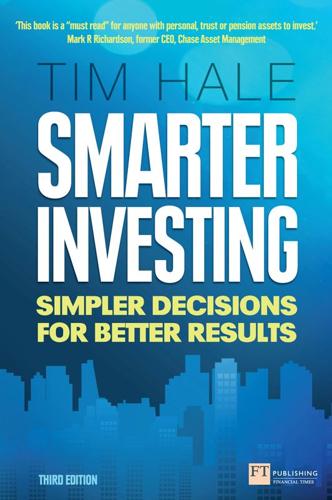
Smarter Investing
by
Tim Hale
Published 2 Sep 2014
This longer-term return for taking on the voting machine risks of being an owner, above the risk-free rate, is known as the equity risk premium (see Figure 6.4). Smaller company (size) and value risks The Fama and French research referred to above, breaks down the risk that an investor receives into three key components: Equity market risk: being in the equity market as a whole, as opposed to simply holding ‘safe’ cash, for which you receive the equity risk premium, or ERP for short. Size risk: which is the risk of owning more risky smaller companies rather than larger companies, for which you would expect to receive an incremental premium – the size premium – relative to the market premium to compensate for these additional risks.
…
In the pecking order of claims on a company’s assets on liquidation, equities are at the bottom of the pile, below secured bankers, bond holders and other creditors; this more risky position (i.e. the higher cost of capital) demands greater reward for investors. This reward or premium is known as the equity risk premium. Measuring it in the past is simple enough; however, like many arguments in investing, not only are there short-term exceptions to long-run averages, but also different time frames tell different stories. Academics and economists argue ad infinitum about the level of the equity risk premium but as the Economist succinctly put it in 2003: ‘Yes, over long periods equities have done better than bonds. But there is no equity “premium” – in the sense of a fairly predictable excess over bond returns on which investors can rely … Searching for a consistent, God-given premium is a fool’s errand.’
…
In terms of potential levels of return over the next decade, assuming a dividend yield of 3% in the UK and a not unreasonable assumption of earnings growth of 5% in nominal terms and inflation at 3 %, and assuming a constant P/E ratio, we get the following estimate of real expected equity return: 3% dividends + 5% earnings growth – 3% inflation = 5% real return If you believe that the P/E ratio will contract from this point forwards (it would not have been a bad assumption to make by the dispassionate investor in 2000 for example), returns will be lower and vice versa. Academics and practitioners each have their own view Other voices in the industry have different opinions. In the case of Dimson, Marsh and Staunton (Dimson et al., 2013), the future equity risk premium above cash is expected to be lower at around 3.0% to 3.5%. JP Morgan Asset Management (my alma mater) on the other hand estimates that the equity risk premium for developed markets is pretty close to long-term history at around 5% (JP Morgan, 2012). No one knows for sure. Perhaps model 5% and 3% and see how it affects you calculations. Downside risks Being an owner of equities is always uncertain with respect to the returns that one is going to receive.
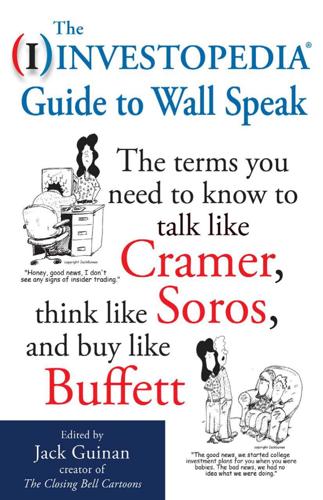
The Investopedia Guide to Wall Speak: The Terms You Need to Know to Talk Like Cramer, Think Like Soros, and Buy Like Buffett
by
Jack (edited By) Guinan
Published 27 Jul 2009
Related Terms: • Asset • Debt/Equity Ratio • Shareholders’ Equity • Current Ratio • Leverage Equity Risk Premium What Does Equity Risk Premium Mean? The return provided by an individual stock or the overall stock market in excess of the risk-free rate. This excess return compensates investors for taking on the relatively higher risk of the equity market. The size of the risk premium will vary as the risk in a particular stock, or in the stock market as a whole, changes; high-risk investments are compensated with a higher premium. Also referred to as the equity premium. Investopedia explains Equity Risk Premium The risk premium is the result of the risk-return trade-off, in which investors require a higher rate of return on riskier investments.
…
The risk-free rate in the market often is quoted as the rate on longerterm U.S. government bonds, which are considered risk-free because of the unlikelihood that the government will default on its loans. Compare that with securities that offer no or little guarantees. Remember, companies regularly experience downturns and go out of business. If the return on a stock is 15% and the risk-free rate over the same period is 7%, the equity-risk premium is 8% for this stock over that period. Related Terms: • Equity • Premium • Risk-Return Trade-Off • Gordon Growth Model • Risk 96 The Investopedia Guide to Wall Speak Euro LIBOR What Does Euro LIBOR Mean? The London Interbank Offer Rate denominated in euros. This is the interest rate that banks offer one another for large short-term loans in euros.
…
If the inflation rate is currently 3% per year, the real return on the investor’s savings today is 2%. In other words, even though the nominal rate of return on the savings is 5%, the real rate of return is only 2%, which means that the real value of the investor’s savings increases only 2% during a one-year period. Related Terms: • Earnings • Inflation • Total Return • Equity Risk Premium • Return on Investment—ROI Receivables Turnover Ratio What Does Receivables Turnover Ratio Mean? An accounting measure used to quantify a firm’s effectiveness in extending credit and collecting debts. The receivables turnover ratio is an activity ratio, measuring how efficiently a firm uses its assets.
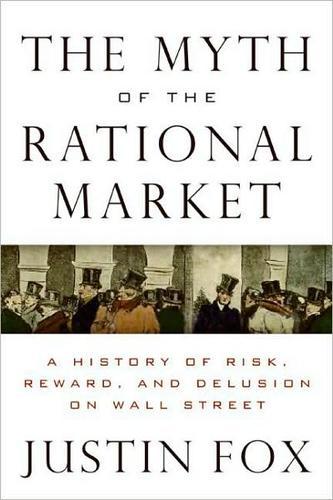
The Myth of the Rational Market: A History of Risk, Reward, and Delusion on Wall Street
by
Justin Fox
Published 29 May 2009
Not surprisingly, Hassett and Glassman approached the subject from the perspective of rationalist finance. Stock prices had been rising, they argued, because the equity risk premium had been shrinking as investors realized that stocks weren’t all that risky compared to bonds. It would keep shrinking until there was no premium at all, with the Dow Jones Industrials at the permanently high plateau of 36,000. Things didn’t work out quite that way, but the argument that the equity risk premium had shrunk caught the fancy of more sober scholars as well. For those who still believed in the rational market, it was a more palatable way to explain the high stock prices of the late 1990s than Shiller’s tales of investor fashion and excess or Shleifer and Vishny’s limits of arbitrage.
…
He told Ibbotson that with data on risky stocks in one hand and data on risk-free government bonds in the other, he and Sinquefield could calculate the historical premium that investors received for owning stocks. It was wonderfully simple—all they had to do was subtract one from the other. Once they’d figured out this “equity risk premium,” Ibbotson and Sinquefield could add it to the prevailing interest rate on government bonds to get what they called “the market’s ‘consensus’ forecast” of its own future trajectory. It looked an awful lot like extrapolating the future from the past, and some critics at the time said as much.
…
Number two, State Street Global, was a big indexer and asset allocator as well.14 Every other money manager of any size in the world now uses at least some of the quantitative tools introduced in the 1970s by finance professors. What’s more, one 1970s quant tool made it far beyond the money management industry. Armed with Ibbotson’s measure of the equity risk premium and Barra’s (or some other firm’s) measure of a stock’s riskiness in relation to the overall market, one could now calculate any publicly traded company’s cost of capital. This metric was the holy grail, the search for which had launched Merton Miller and Franco Modigliani on their 1950s assault on old-style finance.
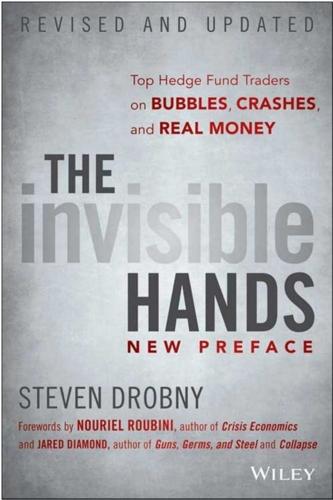
The Invisible Hands: Top Hedge Fund Traders on Bubbles, Crashes, and Real Money
by
Steven Drobny
Published 18 Mar 2010
The diversification that most plans had hoped for in their active programs turned out to be just as much of an illusion. Fixed income departments that had expanded their mandate into credit (which is really just a slice of the equity risk premium) also found their books looking suddenly very equity-like and surprisingly illiquid. In fact, 2008 helped confirm that the vast majority of managers had been generating their “alpha” over the preceding six years through a persistent exposure to the equity risk premium (beta), illiquidity risk premium, short volatility, and/or credit, all four of which are highly correlated for purely theoretical reasons. And plans’ exposure to the illiquidity risk premium proved to be particularly pervasive.
…
The problem is not with asset allocation but with figuring out what returns and what correlations to use. Should you be using 30-year correlations when you are nervous about the one week when all markets collapse simultaneously? Should you be using long-term forecasts for equity risk premia when the next equity risk premium could be negative? We use tactical asset allocation models to manage a portion of our capital and help our research process. These models help in two ways. First, they provide us with an independent yardstick, which we try to outperform. Second, we think of our tactical asset allocation model as an unbiased observer of the markets, which we use to give us some sense of the market’s momentum.
…
The events of 2008 showed us that the following elements are all very important: (1) passive asset mix; (2) active risk allocation; (3) risk measurement techniques; and (4) risk control decisions. More importantly, 2008 revealed that extremely few real money plans were doing any of the four very well. In terms of asset mix, 2008 demonstrated in dramatic form how truly undiversified the classic 60-40 policy portfolio mix really is. Most plans put too much faith in the equity risk premium, when this is but one of the many risk premia that could be assumed. Further, the diversification that managers thought they had in alternative assets was proven mostly a mirage, as many of the “nonequity” assets included in asset mixes—private capital, real estate, and infrastructure, for example—turned out to be very equity-like after all.
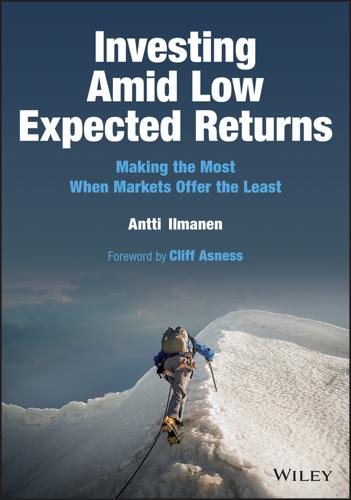
Investing Amid Low Expected Returns: Making the Most When Markets Offer the Least
by
Antti Ilmanen
Published 24 Feb 2022
Chapter 8 will cover theoretical underpinnings and Chapter 16 tactical market timing. My first book, the CFA Institute Research Foundation 2012 collection of articles Rethinking the Equity Risk Premium, as well as the yearbooks by Professors Ibbotson, Dimson-Marsh-Staunton, and Damodaran provide more detail. Historical Equity Premium Historical equity market performance is commonly reported either in excess of inflation, cash (Treasury bills), or bonds (long-term Treasuries) – called the real equity return, equity risk premium, and equity-bond premium, respectively. The key statistic is either the annual arithmetic or geometric average return, or a risk-adjusted return such as the SR (arithmetic average return in excess of cash, divided by its volatility).
…
You also cannot lever total returns or real returns but only excess returns over cash. If you instead hold unhedged foreign assets and if exchange rates do not change (a big if, though a random-walk assumption is a decent base case), the expected total return is the same for you as for the foreign asset's domestic holder. 4.2. Equity Premium The equity risk premium is clearly the most important risk premium both for real-world investors and in the academic literature. According to one-factor asset pricing models like the Capital Asset Pricing Model (CAPM), it is the only premium that influences assets' expected returns. Public equities are the largest allocation in many investor portfolios.
…
Dahlquist, Magnus; and Markus Ibert (2021), “How cyclical are stock market return expectations? Evidence from capital market assumptions,” Swedish House of Finance research paper 21-1. D'Amico Stefania; and Athanasios Orphanides (2014), “Inflation uncertainty and disagreement in bond risk premia,” Federal Reserve Bank of Chicago working paper 2014-24. Damodaran, Aswath (2021), “Equity risk premiums (ERP): Determinants, estimation and implications – The 2021 Edition,” SSRN working paper. Daniel, Kent D.; David Hirshleifer; and Avanidhar Subrahmanyam (1998), “Investor psychology and security market under- and overreactions,” Journal of Finance 53, 1839–1885. Daniel, Kent; and Sheridan Titman (1998), “Characteristics or covariances?”
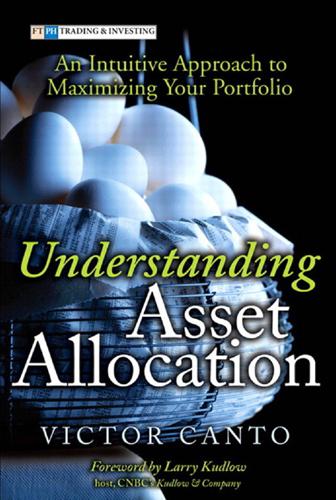
Understanding Asset Allocation: An Intuitive Approach to Maximizing Your Portfolio
by
Victor A. Canto
Published 2 Jan 2005
Chapter 3 Thinking in Cycles 65 This page intentionally left blank 4 TAX TIPS 67 T he corporate story in recent years has been an ugly one. But most black ink dedicated to corporate accounting scandals, questionable capital structures, distorted executive-compensation packages, and rising equity risk premiums has failed to pinpoint an important source of the ugliness: Each undesirable episode was in part influenced by the tax changes that took place over the last two decades. Although the distorting economic effects of the ever-changing tax code impact the way investors, financial managers, and nearly all members of the labor force behave, tax-rate adjustments also help explain shifts in corporate behavior and structure.
…
It would clearly behoove any investor to put his money in countries following these prescriptions and avoid those countries raising taxes and abandoning the price rule. The tax story goes a long way toward explaining the 1970s’ bear market and the 1980s’ and 1990s’ extraordinary bull market, and explaining why the socalled equity risk premium increased steadily during the 1980s and 1990s. To best understand the relationship between taxation and the market, we need to modify existing formulas used in both government and financial forecasting. Market Valuation: The Capitalized Earnings Model Let’s borrow a page from the Fed and use the inverse of the 10-year government Treasury bond (T-bond) yield to value $1 in profits in perpetuity as a proxy for the fair-market-value price-to-earnings ratio (P/E ratio) (see Figure 5.2).
…
See endnote 1 in Chapter 1, “In Search of the Upside.” 6. Sharpe (1992). 7. My framework is described in Canto and Webb (1987 and 2001). Chapter 5 1. The capitalized earnings model and the La Jolla Economics (LJE) modifications to it are only two of the many valuation models used to determine the equity risk premium and whether the market is overvalued or undervalued or the P/E ratio too high or too low. Other examples are Asness (2000), Campbell and Shiller (1998), Canto (2000), Fairfield (1994), Good (1991), Nicholson (1960), and White (2000). 2. A detailed version of the model is presented in Canto and Webb (2001).
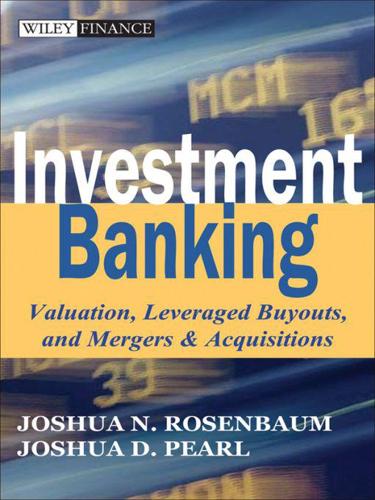
Investment Banking: Valuation, Leveraged Buyouts, and Mergers and Acquisitions
by
Joshua Rosenbaum
,
Joshua Pearl
and
Joseph R. Perella
Published 18 May 2009
Some believe that more recent periods, such as the last ten years or the post-World War II era are more appropriate, while others prefer to examine the pre-Great Depression era to the present. Ibbotson tracks data on the equity risk premium dating back to 1926. Depending on which time period is referenced, the premium of the market return over the risk-free rate (rm - rf) may vary substantially. For the 1926 to 2007 period, Ibbotson calculates a market risk premium of 7.1 %.97 Many investment banks have a firm-wide policy governing market risk premium in order to ensure consistency in valuation work across their various projects and departments. The equity risk premium employed on Wall Street typically ranges from approximately 4% to 8%. Consequently, it is important for the banker to consult with senior colleagues for guidance on the appropriate market risk premium to use in the CAPM formula.
…
Mergers: What Can Go Wrong and How to Prevent It. Hoboken, NJ: John Wiley & Sons, 2005. Gilson, Stuart. “Transactions Costs and Capital Structure Choice: Evidence from Financially Distressed Firms.” Journal of Finance 52 (1997): 161-196. Goetzmann, William N., and Roger G. Ibbotson. The Equity Risk Premium: Essays and Explorations. New York: Oxford University Press, 2006. Graham, John R. “How Big Are the Tax Benefits of Debt?” Journal of Finance 55 (2000): 1901-1941. Greenwald, Bruce C. N., Judd Kahn, Paul D. Sonkin, and Michael van Biema. Value Investing: From Graham to Buffett and Beyond.
…
See year-end discounting endowments engagement letter enterprise value at exit, in LBO calculation of implied enterprise value multiples enterprise value-to-EBIT (EV/EBIT) enterprise value-to-EBITDA (EV/EBITDA) enterprise value-to-sales (EV/sales) EPS. See earnings per share equity contribution equity investors equity purchase price equity research analysts equity research reports equity risk premium. See also market risk premium equity sweetener equity value at exit, in LBO calculation of implied equity value multiples. See also price-to-earnings (P/E) ratio equity-linked securities. See convertible securities European Commission EV/EBIT. See enterprise value-to-EBIT EV/EBITDA.
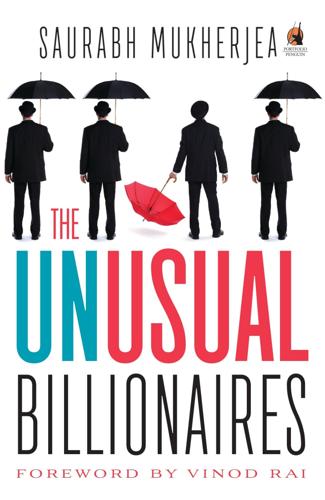
The Unusual Billionaires
by
Saurabh Mukherjea
Published 16 Aug 2016
However, given that equities carry an element of risk that government bonds don’t, an equity investor would want a premium return for this extra risk. This is the equity risk premium—the extra return an investor expects over and above the risk-free rate for investing in equities. The equity risk premium, in turn, is calculated as 4 per cent (the long-term US equity risk premium) plus 2.5 per cent to account for India’s rating (BBB—as per S&P). Hence, adding the risk-free rate of 8 per cent and an equity risk premium of 6.5 to 7 per cent gives a cost of capital of around 15 per cent. Note further that over the past twenty and thirty years, the Sensex has delivered returns of around 15 per cent per annum, thus validating my point of view that 15 per cent is a sensible measure of the cost of capital for an Indian company.
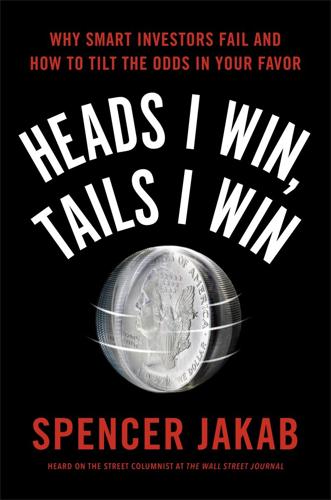
Heads I Win, Tails I Win
by
Spencer Jakab
Published 21 Jun 2016
Irrationally exuberant investors briefly cheered their conclusion. Yes, stocks make a lot more money than other investments in the long run. But as your mother probably told you, there’s no such thing as a free lunch—you have to stomach a lot more volatility to get that reward. Financial types call this reward the “equity risk premium,” and between 1928 and 2014 it was 4.6 percentage points a year as measured by the gap between the average annual return of the main U.S. stock index and the ten-year Treasury note. Hassett and Glassman neglected the word “risk” in that definition and were saying, in a nutshell, that the difference was there to be grabbed because all the conventional wisdom linked to fear of volatility was wrong.
…
Rejecting an offer of, say, $15 for a potentially winning flip means that an extra $2.50—the average of a winning and losing flip—was considered insufficient by many subjects for the risk of possibly losing. The amount of free money has to be at least $5 to get people to accept the risk, on average. The same phenomenon plays out in the stock market every day. Superior long-run returns—the equity risk premium that Hassett and Glassman thought should be zero—are a necessary inducement to play in the market, and it still isn’t enough for some people. Remember Felicity Foresight? Not surprisingly, the best investment in much of the century that she racked up nearly $10 quintillion was stocks—sixty-nine years out of one hundred, to be precise.
…
: Or, A Good Hard Look at Wall Street (Schwed), 149–50 You Can Be a Stock Market Genius (Greenblatt), 192 Brandes Institute, 194–95 Bridgewater Associates, 172 brokerage accounts/firms, 2, 19, 23, 32, 56, 83, 143, 196–97, 207, 209–11, 216–17, 228, 257 Brown Brothers Harriman, 90 Buckingham, John, 128–29 Buffett, Warren, 3, 30, 160 advice of, 34, 157–58, 161–62, 235–36 and bet with Seides, 171, 174–75 criticizes hedge funds, 169–71 and Graham-and-Doddsville, 218–19, 223 inspired by Graham, 194, 218–19, 232 and value investing, 113, 157–58, 220 bull market, 32, 38, 42–43, 46, 51–52, 55–61, 70, 75, 88, 90–92, 117, 124, 149, 214 Bureau of Economic Analysis, 57 Burns Advisory Group, 151 BusinessWeek, 126, 144, 213, 238 CalPERS, 186–87 Capital Decimation Partners, 164, 168, 172 Carlson, Ben, 30–31, 44, 61 CGM Focus Fund, 111 Charles Schwab, 83 Chicago Board Options Exchange (CBOE), 239–40 Clipper Fund, 105 Cohen, Abby Joseph, 128 Columbia University, 108, 217–18 commissions, 18, 135, 156, 181, 197, 202, 209, 211, 217 commodity investing, 73, 81, 205–6, 251 compound annual return, 19, 52–54, 64, 67, 95, 111, 219 average return, 75–76, 110 interest, 2, 4, 14, 30–31, 44, 91 contango phenomenon, 205–6 Cook, Michael, 154 Countrywide Financial, 109 Courtney, Tim, 150–52 Cramer, Jim, 118, 128 crashes, 76, 234, 242 of 1929, 39, 51, 54, 92–93, 123–24, 232–33, 236, 238, 240–41, 243 of 1973–74, 75, 237 of 1987, 33, 39–40, 51, 125–26, 233, 236, 240–41 of 1998, 33, 166–67, 238 of 2008, 33, 40, 47, 50, 61, 84, 126, 174–75, 236, 239, 241–42 Credit Suisse, 181 CXO Advisory Group, 128–29 cyclically adjusted P/E (CAPE), 92–95 Dalbar, 13–14, 16, 32–33, 37, 74 decision markets, 146 DiMaggio, Joe, 98, 102, 104 Direxion Daily Small Cap Bull & Bear 3x ETF, 204 dividend investing, 54, 216–17, 226–29 Dodd, David, 194, 218–19 dot-com boom, 132, 179, 186, 193, 195, 237, 242 Dow Jones Industrials, 42, 251 beating it, 219 dividend-yielding stocks of, 192 drops in, 33, 45, 52, 125–26 increases in, 46, 88 and mutual funds, 152 predictions of, 121, 123–26 Dreman, David, 128–29 Drudge Report, The, 46–47 Eastman Kodak, 101, 109 economic contractions, 50, 52–54 growth, 49, 52, 57, 71 recessions, 47–52, 56–58, 143–44, 232 statistics, 57, 59–60 Economist, 30 efficient market theory, 98, 108, 112, 146, 149, 158, 219, 225 Einhorn, David, 173 Einstein, Albert, 30, 44 Elliott, Ralph Nelson, 124 emerging markets, 83, 86, 135, 187, 238 emotional investing, 18, 21, 180, 200, 223, 234–36, 249–50 Employee Benefit Research Institute, 80 endowments, 81–82, 174, 187 energy companies/stocks, 100, 104, 109, 200. See also gas; oil Enron, 80, 101, 143 equity risk premium, 69, 73 estate planning, 23, 252 Estimize, 146 Eurozone crisis, 46–47 exchange-traded funds (ETFs), 186, 189, 192, 204–5, 216–17, 222–25, 227–28 expert advice, 30, 146 believing in, 120–21 find the cheapest, 18, 26, 147, 251 high cost of, 3, 14, 16–17, 26–27 need for, 20–21, 62, 250–52, 254, 257 poor advice from, 24–25 “robo,” 27, 83, 145, 217, 250, 252, 257 See also analysts; financial: pundits; fund managers; market predictors ExxonMobil, 195 Faber, David, 248 Faber, Marc “Dr.
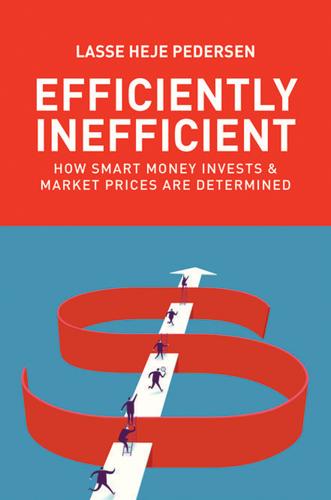
Efficiently Inefficient: How Smart Money Invests and Market Prices Are Determined
by
Lasse Heje Pedersen
Published 12 Apr 2015
Dedicated short-bias managers look for companies that are going down, searching for hotels where all the rooms are empty, pharmaceutical companies with drugs that no doctors prescribe (or with new risks), or companies based on fraud or misrepresented accounting. Since stocks go up more often than they go down (called the equity risk premium), dedicated short-bias managers are fighting against the general uptrend in markets, and, perhaps for this reason, they comprise a very small group of hedge funds (anecdotally consisting of pessimistic managers). Almost all equity long–short hedge funds and dedicated short-bias hedge funds (and most hedge funds in general) engage in discretionary trading, meaning that the decision to buy or sell is at the trader’s discretion, given an overall assessment based on experience, various kinds of information, intuition, and so forth.
…
This strategic asset allocation is crucial to the success of pension funds, endowments, and other investors. The strategic allocation is sometimes called the policy portfolio or the benchmark portfolio. The strategic asset allocation of large institutional investors is naturally focused on market risk premiums, specifying the allocation to equities (equity risk premiums), government bonds (term premiums), corporate bonds and other risky debt (credit risk premiums), illiquid and real assets such as real estate, forestland, and infrastructure (liquidity risk premiums), as well as the cash reserves. The strategic asset allocation may also include allocations to alternative risk premiums, such as the styles discussed in this book (value, trend-following, liquidity, carry, low-risk, and quality premiums) or in terms of active investment strategies (e.g., hedge fund allocations across equity, macro, and arbitrage strategies).
…
See also dividend discount model dividend yield, 176–77, 176n; as carry of an equity, 188; historical average, 178; market timing based on, 172–75, 174f, 174t DJCS Managed Futures Index, 221, 222t Donchian, Richard, 208 downside risk, 32 drawdown (DD), 35, 36f drawdown control, 54, 59, 60–62; by managed futures managers, 225 Drexel Burnham Lambert, 129 Druckenmiller, Stanley, 11 dual-listed stocks, 149–50, 149f, 151, 152f, 235 duration, 244; modified, 180, 181, 244, 246, 251, 253, 254, 255 Dutch disease, 199 dynamic hedging strategy, 234, 235, 237–38, 240 earnings, as net income, 92, 178–79 earnings manipulation, 121 earnings quality, 101–2 earnings restatements, 121 earnings yield, 178–79, 178n6 economic capital, 32 economic environments, 191–92, 191t; shocks leading to, 195t, 196 effective cost, 67–68 efficiency of markets: enhanced by hedge funds, 26; enhanced by short-selling, 123; enhanced by value investors, 89; Scholes on fixed-income arbitrage and, 263 efficiently inefficient markets: arbitrage in, 151, 233, 235, 241; for convertible bonds, 271; defined, vii; dynamics of, 3–6; equity markets as, 88–89; information in, 40–41; limited amount of profit for active investment in, 20; liquidity risk in, 42; merger arbitrage and, 295; for money management, 3n3; versus neoclassical finance and economics, 6, 7t; option prices in, 240; price discrepancies between bonds in, 241; Scholes on, 265; short-selling and, 119 efficient market hypothesis, vii, 3; Harding on, 227, 228; liquidity spiral theory versus, xiii; paradox of, 3n3; Soros on, 201, 203; tests of, 3, 3n2 “Egyptian” collar deal, 302, 302f Einhorn, David, 122 embedded options: convertible bonds with, 281; corporate bonds with, 180n; Scholes on, 263 emerging markets: bonds in, 262; global macro traders and, 12; Soros on, 205, 207 e-mini S&P 500 futures, and flash crash of 2010, 155–57, 156f endowments, 43, 168, 170 Enron, 1, 124–27, 128, 129 enter–exit trading rule, 48 enterprise valuation, 93–94 equalization agreement, 149 equity capital in a hedge fund, 74–75, 76f; daily change in, 78 equity carry trade, 188, 188t equity index futures: e-mini S&P 500 futures, 155–57, 156f; in time series momentum strategies, 209, 213, 214, 214–17f, 218t equity market neutral investing. See fundamental quantitative investing equity returns, 176–79; historical, 178, 179 equity risk premium, 42, 89, 177–78, 178n5; short-selling against headwind of, 10, 124; strategic asset allocation and, 168 equity strategies, 8, 9–11, 87–88. See also dedicated short bias; discretionary equity investing; quantitative equity investing; value investing equity valuation, 89–94; Ainslie on, 109, 110.

Capital Ideas Evolving
by
Peter L. Bernstein
Published 3 May 2007
In the table below, the assumptions are in plain text while the results of the calculations are in bold type: Calculation of Passive Alphas: The Example of REITs* Total expected return on REITs Less risk-free rate 6.50% −1.50% REIT risk premium over cash Less REIT beta × Equity risk premium at 5.75% = 0.4833 × 0.0575 = 5.00% −2.78% Passive REIT alpha * 2.22% The equity risk premium of 5.75 percent in this example is derived in Exhibit 1 on page 2 of Leibowitz and Bova (2005b), where it is assumed to be a total equity expected return of 7.25 percent minus the return of 1.50 percent on cash. bern_c14.qxd 3/23/07 208 9:11 AM Page 208 THE PRACTITIONERS All alphas calculated in this manner add directly to the portfolio return.
…
bern_c07.qxd 94 3/23/07 9:05 AM Page 94 THE THEORETICIANS Yes, Gene Fama would say “Yes, Virginia, there is a premium for holding stocks instead of putting money in the bank.” On the other hand, that premium averages 5% to 6% after inf lation, with a standard deviation of 15% to 20%. Under those conditions, you can have a 25- to 50-year period in which your return will be less than zero, and who wants that? So if we can’t expect to get empirical proof of the equity risk premium in an experimental setting, I don’t think fiduciaries should keep throwing that basic premise of stocks as a sure thing over the long run at their clients. Sharpe is concerned that too many practitioners—and a large number of the business school professors from whom they learned their trade—tend to forget that all asset pricing models are about expectations.
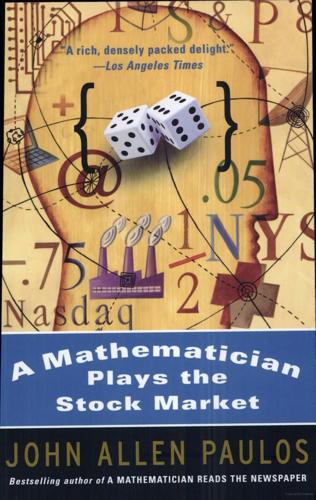
A Mathematician Plays the Stock Market
by
John Allen Paulos
Published 1 Jan 2003
And their prices have been relatively low because they’ve been viewed as risky and people need some inducement to make risky investments. But what happens if investors believe Siegel and others, and no longer view stocks as risky? Then their prices will rise because risk-averse investors will need less inducement to buy them; the “equity-risk premium,” the amount by which stock returns must exceed bond returns to attract investors, will decline. And the rates of return will fall because prices will be higher. And stocks will therefore be riskier because of their lower returns. Viewed as less risky, stocks become risky; viewed as risky, they become less risky.
…
Ebbers, Bernie acquisition appetite of arrogance of author emails offer of help Digex purchase down-home style of forced to sell WCOM stock fraud by pump and dump strategy and purchase of WorldCom stock by economics, human behavior and The Education of a Speculator (Niederhoffer) “efficient frontier” of portfolios (Markowitz) Efficient Market Hypothesis background of impact of accounting scandals on increased efficiency results in decreased predictability investors beliefs impacting moving averages and paradoxes of randomness and rationale for resistance and support levels and versions of Elliott, Ralph Nelson Ellison, Larry employee remuneration vs. CEO remuneration endowment effect Enron accounting practices margin calls on CEO Ken Lay environmental exploitation, as Ponzi scheme equity-risk premium Erdös, Paul Escher, M. C. European stock market euros benefits of standardizing European currencies euro-pound/pound-euro exchange rate expected excess return expected value. see also mean value covariance and formula for obtaining graphing against risk (Markowitz optimal portfolios) insurance company example “maximization of expected value,” mu (m) probability theory and exploitable opportunities, tendency to disappear Fama, Eugene Fibonacci numbers Elliott wave theory and golden ratio and fibre-optic cable fifty-two-week highs “flocking effect,” Internet Fooled by Randomness (Taleb) formulas Black-Scholes options compound interest expected value fractals Frank, Robert fraud. see also accounting scandals applying Benford’s Law to corporate fraud applying Benford’s law to income tax fraud Bernie Ebbers Salomon Smith Barney benefitting illegally from IPOs WCOM fraud wrongdoing of brokers at Merrill Lynch free market economy French, Ken Full House: The Spread of Excellence from Plato to Darwin (Gould) fund managers. see also stock brokers/analysts fundamental analysis determining fundamental value by discounting process evidence supporting present value and sequence complexity and trading rules and as sober investment strategy stock valuation with unexciting nature of future value P/E ratio as measure of future earnings expectations present value and gambler’s fallacy games gambling and probability game theory guessing games Monopoly Parrondo’s paradox St.
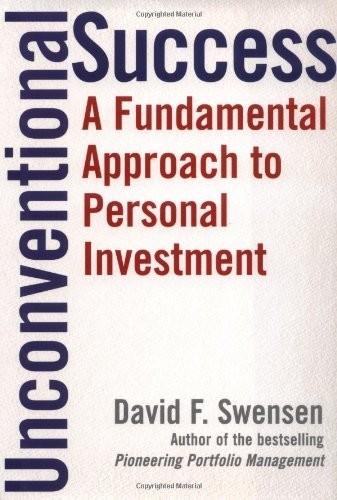
Unconventional Success: A Fundamental Approach to Personal Investment
by
David F. Swensen
Published 8 Aug 2005
Finally, stocks trade in broad, deep, liquid markets, affording investors access to an impressive range of opportunities. Equity investments deserve a thorough discussion, since in many respects they represent the standard against which market observers evaluate all other investment alternatives. Equity Risk Premium The equity risk premium, defined as the incremental return to equity holders for accepting risk above the level inherent in bond investments, represents one of the investment world’s most critically important variables. Like all forward-looking metrics, the expected risk premium stands shrouded in the uncertainties of the future.
…
Investors relying on such forecasts depend not only on the fundamental earning power of corporations, but also on the stock market’s continued willingness to increase the price paid for corporate profits. As illogical as it seems, one popular bull market tome published in 1999 espoused the view that equity valuation would continue to increase unabated, arguing for a zero equity risk premium. Advancing the notion that over long periods of time equities always outperform bonds, in Dow 36,000: The New Strategy for Profiting from the Coming Rise in the Stock Market, James Glassman and Kevin Hassett conclude that equities exhibit no more risk than bonds.5 The authors ignore the intrinsic differences between stocks and bonds that clearly point to greater risk in stocks.

The Price of Time: The Real Story of Interest
by
Edward Chancellor
Published 15 Aug 2022
By 2015, Swedish household debt was close to 180 per cent of disposable income (up from 100 per cent in 2000) and average debt for households with mortgages was more than three times disposable income. Yet, interest payments by households had fallen to a record low of 3 per cent of GDP (Financial Stability Report 2015, Riksbank, 25 January 2016). fn2 The gap between the earnings yield on stocks and the yield on risk-free government bonds is known as the ‘equity risk premium’. After 2008, the equity risk premium remained above average (i.e., it signalled that stocks were cheap) even as the stock market started to look extremely expensive on other valuation measures. fn3 Grantham writes: ‘Pre-1997 real rates averaged 200 bps higher than now and leverage was 25 per cent lower. At the old average rate and leverage, profit margins on the S&P 500 would drop back 80 per cent of the way to their previous much lower pre-1997 average, leaving them a mere 6 per cent higher’ (Jeremy Grantham, ‘This Time Seems Very, Very Different’, GMO Quarterly Letter, First Quarter 2017).
…
Oliver Renick and Liz McCormick, ‘Greenspan Sees No Stock Excess, Warns of Bond Market Bubble’, Bloomberg, 31 July 2017. Greenspan’s claim that there was no bubble in the stock market was based upon the observation that, at the time of his comments, the earnings yield on the S&P 500 was around 4 percentage points higher than the 10-year inflation-adjusted bond yield – a higher than average equity risk premium. 33. John M. Keynes, The General Theory of Employment, Interest and Money [1936], in The Collected Writings of John Maynard Keynes, vol. VII (Cambridge, 1973), p. 167. 34. See Daisy Maxey, ‘The Safety and the Risk in Ultrashort Bond Funds’, Wall Street Journal, 8 August 2014. Ultra-short bond funds lost an average of 8 per cent in 2008.
…
(ketchup-maker), 161, 169 helicopter money, 112, 131 Hilferding, Rudolf, Finance Capital (1910), 158 Hilton, Paris, 178 Hirst, Damian, ‘Golden Calf’, 208 Hoag, David, 246 Hoenig, Thomas, 116 Holland, Henry Lancelot, 75 Holmes, Elizabeth, 149 Homer, Sydney, 4, 11, 68, 109 Hong Kong, 175 Hoover, Herbert, 92, 100, 141–2 Horan, Hubert, 149 d’Horn, Antoine-Joseph, Count, 51 Houellebecq, Michel, 309 Hudson, Michael, 9* Hume, David, 12, 27, 41, 45, 85*, 130–31, 132–3 Hungary, 253 IBM, 166 Iceland, 252, 253, 253*, 262, 300–301 Icelandic Central Bank (ICB), 300 Immelt, Jeff, 170–71 India, 254–5, 258 Indonesia, 258 industrial sector: canal construction mania (1790s), 69, 74; Chinese dumping of surpluses, 277, 280–81; electrification, 89; expansion from 1750s in Britain, 62–3; extended supply chains, 261; high demand in developing world, 128; impact of Great Depression on, 142–3; mining stocks, 79; new technologies in 1920s, 89, 90, 96, 100; production gluts in China, 276–7, 280–81; time in production, 14–15, 22, 95, 95† inequality: Bastiat’s view, xviii–xix; central bankers and responsibility for, 214–17; in China, 287–8, 287†; and Covid-19 pandemic, 309–10; and elite displays of wealth, 209–10, 212; and ‘financial repression’, 287–8; and financialization, 203–8; good and bad types of, 299; and Hayek, 296, 299; impact of crisis on the 99 per cent, 210–13, 215–17, 237; and inflation targeting, 123; interest as always about justice, 202; Marshall on deflation, 99–100; moral arguments over interest, 17, 201–2; multi-decade decline in from Great Depression, 203; multi-decade increase from early 1980s, 203–17, 204*; Piketty’s theory on, 216–17; in post-crisis Iceland, 301; rich as benefitting from easy money, 12*, 44, 202–5, 205, 206–10, 211, 214–17, 237; as rising in post-crisis decade, 44, 206–17, and secular stagnation argument, 205–6; seventeenth century writers on, 34, 36; stress levels after 2008 crisis, 210–11; trickle-down effect, 55; unequal access to credit, xxii, xxv, 14, 15, 215; in USA of 1920s, 203 inflation, xxiii, xxv; and asset price bubbles, xxiii, 134, 135; ‘Cantillon effect’, 60*; case against, 108*; and Covid-19 pandemic, 310; global aspect of, 122; Greenspan’s focus on, 110–14; Hayek on, 302; inflation targeting, 119–20, 121–3, 241; and Law’s ‘System’, 56–7, 58, 59–61; and low rates of interest, 42, 43, 56–7, 58, 59–61; and ‘natural rate’ of interest, 133–5; in post-Great War period, 84; purged by high interest rates, 84; return of in 1960s, 302; after Second World War, 311; in USA during 1970s, 108–9; Volcker’s ‘practical monetarism’, 109–10; and Wicksell’s view of interest, 42 insurance: ‘catastrophe bonds’, 222; credit default swaps (CDS), 219, 221; ever-escalating life premiums, 198–9, 199*; and low-interest regimes, xxi, 193, 195, 196*, 245; and moral hazard, 220, 233; underwriting, 219–20, 219†, 233 interest: ancient connection with rent, 7; Austrian school’s view, 95–6, 100, 101, 105, 108; calculating of how much due, 6, 14; central banks’ influence on long-term rates, 133, 134–5; concealed in bills of exchange, 24; and ‘creative destruction’ idea, 140–43, 143*; determining of rate level, 10–13; feedback loop with globalization, 260–61, 311; as hard to predict, 310–11; Hazlitt on price system, xx; as at heart of capitalism, xxii, xxv, 16, 28, 141, 297; high levels under Volcker at Fed, 109; and inequality in modern capitalism, 17; inversely related to capital value, 31, 43, 44, 52–61, 88, 116*, 158, 172–5; and length of ‘time in production’, xxiv, 14–15, 16, 22, 95, 95†; loans related to consumption, 6, 9*, 25, 28–9, 30; long-term rates in US (1945–2021), 134; lucrum cessans (foregone profit) concept, 25; moral arguments over inequality, 17, 201–2; paid by taking possession of collateral, 6–7; politicization of rate setting, 85–6; rate of and cultural level of a nation, 13, 29; rates set by custom and law, 11, 12; ‘real’ and ‘monetary’ factors, xxiv, 10, 12–13, 41, 131, 132–3, 133*, 138–9; as the ‘time value of money’, xxiv, xxv–xxvi, 10, 14–15, 16, 20, 22, 26–7, 28–32; variety of different rates, xxv, 12, 13, 14; Thomas Wilson’s definition, 26–7, 28, 30 see also ‘natural rate’ of interest; usury interest, functions of, xxiii–xxvi; allocation of capital, xxi, xxiv, xxv, 11, 15–16, 32, 139, 141–50, 151–5, 264, 266; capitalization of wealth, 139, 173–87; discounted value of asset’s future income, 28, 90–91, 173, 297; distribution of wealth, xxv, 139, 201–17, 237; financing of companies, 139, 157–71; level of savings, xxiv, xxv, 139, 188–93, 194–9; measurement of risk, xxv, 139, 176–7, 218–19, 220–34; as the ‘price of leverage’, xxiv, xxv, 135; regulation of international capital flows, xxv, 139; Schumpeter’s view, 141; valuing of long-lasting assets, 15 interest, history of, xxii–xxiii; 1825 banking crisis, 64–7, 75; anticretic interest, 6; attitudes to usury, 17–24, 25–6, 200–201, 219; Babylonian origins, 3–4, 14–15; barter-to-money myth, 14; Child’s abatement of interest proposals, 33–4, 35, 36–7, 38–40, 41, 43, 44; consumer and commercial lending distinction, 6, 9*, 25–6; decline of rates in late Middle Ages, 35, 36; defence of interest in seventeenth century, 37, 38–41, 42–4, 236†; emergence of modern credit cycle, 62–4; etymologies of interest, xvii–xviii, 4–5, 7, 11, 17, 18, 25, 26, 200; European rates (1200–1800), 36; Fed’s tightening (1928), 108, 261; ‘forgotten depression’ (1921), 84, 86, 100, 143; gradual rate decline in early modern Europe, 49; interest as much older than coined money, 3–4, 14; invention of compound interest, 8–9; low rates in Amsterdam, 35–6, 39; low rates in late-nineteenth century USA, 157, 158–9; new concept of at start of modern era, 27–8; post-1571 debates on excessively high rates, 34–40; post-Great War period, 84, 85–6; Proudhon-Bastiat debate, xvii–xix, xxi, xxii, xxv, 9; speculative manias (1630s-1890s), 64–6, 67–72, 73, 74, 75–6, 77–8, 79–80; stability of rates in ancient world, 10–12 see also Mesopotamia, ancient; Middle Ages; Mississippi bubble; Near East, Ancient; price-stabilization policy of 1920s interest, ultra-low/excessively low rates: and 1825 banking crisis, 64–7, 75; in 1980s/1990s Japan, 105–7, 106; Bagehot’s views, 64, 66, 67, 68, 69, 72, 73, 80–81, 220, 233; under Bernanke after 2008 crisis, 124, 131, 133, 137–8, 153, 155, 181–3, 207, 215, 230, 238–9, 240, 243–4, 262; under Bernanke before 2008 crisis, 111–12, 113, 115–17, 115†, 118–19; and British government debt conversions, 65, 65*, 69, 79; Buffett on, 308*; buyout barons as beneficiaries of, 160–63, 161*, 183†, 204, 207, 222, 237; Cantillon’s warning over, 58, 60–61; and capital-intensive industries, 62–3; as common feature of asset bubbles, xxiii, 116*, 123, 135, 172–87, 180, 220; consumer behaviour affected by, 32; and ‘financial repression’ in China, 266–81, 268*, 277*, 283, 292; ‘financial repression’ term, 191; under Alan Greenspan, 111, 112, 113, 114, 115, 117, 134–5, 162, 186, 190–91, 204, 226–7, 238, 252–3, 267; Icelandic Counterfactual, 300–301; impact on emerging markets, xxiii, 253–60, 262–3; impact on stock market/bond investors, 193–4; and inequality, 205–17, 299; in late nineteenth century, 78–80; and Law, 49, 52–4, 56*, 58–61; ‘low rates beget lower rates’ thesis, 44, 135, 136, 139, 206, 231, 234; low real rates in 1920s USA, 87–91, 89, 92–4, 96–8, 203; misallocation of capital by, xxi, 32, 43, 114, 136, 141–50, 151–5, 266–81, 289; during Napoleonic Wars, 69–70; productivity collapse in post-crisis decade, 150–51, 152–3; ‘reversal interest rate’, 236; rich as benefitting from, 44, 202–10, 211, 214–17, 237; and rising profits in post-crisis USA, 183, 185, 211; and risk taking, xxi, 52–61, 64–73, 77–81, 121–2, 135–9, 145, 149, 176–9, 220–34, 283, 285, 291–2; robber baron era in USA, 156–9, 203; and saving, 44, 77, 190–93, 194–9, 205–6; and secular stagnation narratives, 126–7, 129, 131, 132–9; seventeenth-century debates on, 34–44, 236†; trouble exiting from policy, xxi–xxii, 57–9, 60–61; ‘unicorns’ feed on, 148–50, 153, 155, 173, 176–7; unintended consequences, xxi–xxii, 32, 44, 137–9, 238, 297–8; Paul Volcker’s view of, 108–9; as warning sign, 13, 114; warnings from economists at BIS, 113–14, 131–4, 135–9, 153; William White on, 114; and ‘yield-chasing’, 65–6, 67–9, 114, 116, 136, 221–6, 230–31, 230*, 233–4, 237–8, 256, 305; zero interest rate policy (ZIRP), xxi, 123, 131, 137–8, 141, 146, 172–3, 191, 192; and zombification, 146–8, 153, 155, 237, 240, 277, 289 see also Mississippi bubble; negative interest rates International Dynamite Trust, 159 International Monetary Fund, 119, 144, 147, 168 investment: and China’s rapid expansion, 266–7, 269–70, 271–81; Chinese stimulus plan (2008/9), 270, 271–81, 282, 289, 292; collapse of in post-crisis decade, 152; easy money as incentive for undue risks, xxi, 136, 149, 220, 221–4, 230–31, 283, 285, 291–2; ‘equity risk premium’, 176*; in listed ‘yieldcos, 222; long-term bonds, 69, 131*, 193, 224–6; ‘malinvestment’ term, 32, 95, 148; meme stocks, 307; and production gluts in China, 276–7, 280–81; with returns in distant future, 148–50, 158, 176–7; Terborgh on, 125*; ‘unicorn’ start-up companies, 148–50, 153, 155, 173, 176–7; valuation of by interest, xxiv, xxv, 30–31, 173; White on impact of low interest rates, xxi see also asset price bubbles Ireland, 144–5, 225, 253, 279 Irving, Washington, 55† Israel, ancient, 9, 17, 200 Istel, Yves-André, 214 Italy, 21–3, 23, 35, 144–5, 147–8, 225, 293, 304 Japan: ageing population in, xxiv, 29, 198; deflation since the early 1990s, 100–101, 107–8, 114, 119, 135, 136, 145–6, 147, 148, 182, 191, 193; falling savings levels in, 192; first foreign loan (1870), 78; great bubble economy (1980s), xxiii, 105–8, 145, 182, 184, 271, 273, 279, 285–6; inflation targeting in, 119, 122, 241; negative interest rates in, xxi, 29, 122, 224, 225, 242, 244–5; public debt in, 291*; quantitative easing in, 241, 242, 294; ‘retirement gap’ in, 198; zaitech practitioners, 106, 182, 185; zombification of economy, 145–6, 147 Jevons, W.
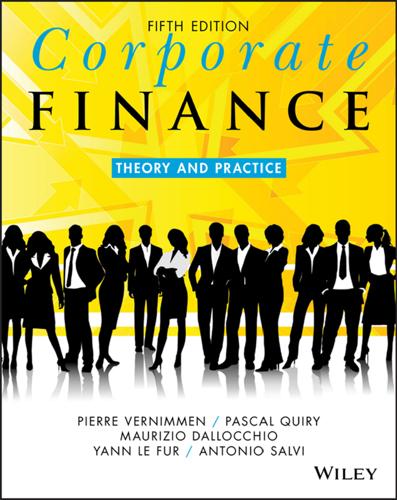
Corporate Finance: Theory and Practice
by
Pierre Vernimmen
,
Pascal Quiry
,
Maurizio Dallocchio
,
Yann le Fur
and
Antonio Salvi
Published 16 Oct 2017
, the historical risk premium has been as follows: Belgium 3.0% South Africa 6.2% China (1993–2016) −3.3% Spain 3.3% France 6.2% Switzerland 3.6% Germany (exc. 1922/23) 6.1% US 5.5% Italy 5.7% UK 4.4% Japan 6.1% Europe 3.3% Russia (1995–2014) 5.6% World 4.2% Source: Crédit Suisse Global Investment Returns Yearbook 2017. Equity risk premium compared to short-term interest rates. The equity risk premium can be historical or expected (or anticipated). The historical risk premium is equal to the annual performance of equity markets (including dividends) minus the risk-free rate. The expected risk premium is not directly observable. However, it can be calculated by estimating the future cash flows of all the companies, and then finding the discount rate that equates those cash flows with current share prices, from which we deduct the risk-free interest rate.
…
Amihud, Asset pricing and the bid–ask spread, Journal of Financial Economics, 17(2), 223–249, December 1986. H. Mendelson, Y. Amihud, The liquidity route to a lower cost of capital, Journal of Applied Corporate Finance, 12(4), 8–25, Winter 2000. For a comprehensive review of risk premiums: W. Goetzmann, R. Ibbotson, The Equity Risk Premium: Essays and Explorations, Oxford University Press, 2006. R. Mehra, Handbook of the Equity Risk Premium, Elsevier Science, 2007. J. Siegel, Stock for the Long Run, 4th edn, McGraw-Hill, 2007. On risk premiums: R. Arnott, P. Bernstein, What risk premium is “normal”?, Financial Analysts Journal, 58(2), 64–85, March–April 2002. S. Brown, W.
…
Note that the coefficient β measures the non-diversifiable risk of an asset and not its total risk. So it is possible to have a stock that is, on the whole, highly risky but with a low β if it is only loosely correlated with the market. The difference between the return expected on the market as a whole and the risk-free rate is called the equity risk premium. This averages 3–6% in developed economies, but is higher in emerging markets. At the peak of the financial crisis that began in 2008, the equity market risk premium increased to as much as 10% and has slowly decreased since then to reach close to 7% in 2016. Source: Associés en Finance (Europe), BNP Paribas Arbitrage & Damodaran (USA) Over the very long term (116 years!)
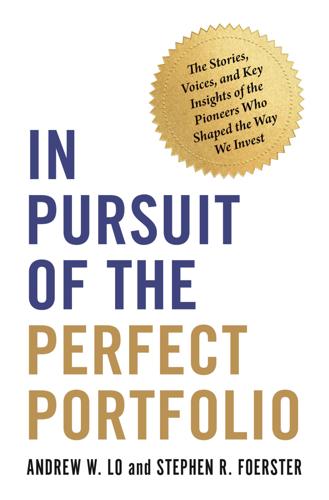
In Pursuit of the Perfect Portfolio: The Stories, Voices, and Key Insights of the Pioneers Who Shaped the Way We Invest
by
Andrew W. Lo
and
Stephen R. Foerster
Published 16 Aug 2021
However, while the 1929 crash was followed by plunging profits, massive bankruptcies, and the greatest economic depression of all time, the 1987 crash was followed by increased corporate profits and a continuing expansion of the economy. He examined whether changes in expected equity returns could rationalize such a large decline in stock prices or if changes in the expectations of future corporate profits could account for it. Under the first assumption of changes in expected equity returns, Siegel concluded that the equity risk premium would have had to drop from around 5 percent in January 1987 to less than 2 percent in October 1987, then back to 5 percent in early 1988—an unprecedented shift in the premium. Using the second assumption of changes in expected corporate profits, however, Siegel found that around October 1987 there was considerable dispersion in the expectations of profit growth.
…
In September 2018, the P/E ratio was in the low 20s, based on the last 12 months of earnings, dropping to 18 based on current year earnings and to 16 based on forecasted earnings for 2019, not out of line with historical averages. Based on the current ratio, he forecasted real returns of about 5.5 percent (or nominal returns of 7.5 percent, assuming 2 percent inflation). With real ten-year Treasury notes yielding 1 percent, the equity risk premium was estimated at 4.5 percent, somewhat above the historical average of around 3–3.5 percent. Siegel’s conclusion: “Stocks are overvalued on a long-term basis, but bonds are enormously overvalued on a long-term basis. The relative valuation of stocks relative to bonds is actually among the more favorable in history.”61 Finally, he noted that investors today are able to buy index funds at virtually zero cost, which were not available before.
…
For example, a Hawk with the Midas touch who’s a Scrooge with her money and living in an expansion is in great shape and can be fully invested in the stock market—including investments in active strategies (if that’s consistent with her investment philosophy) and sector-specific funds such as biotechnology—so as to take full advantage of the equity risk premium. However, a Dove with the Penia touch who’s a Gatsby with the little money that he has and is living in a recession has to be exceedingly careful about not just his portfolio but also controlling household expenditures and anticipating unexpected expenses such as health care issues or property damage.
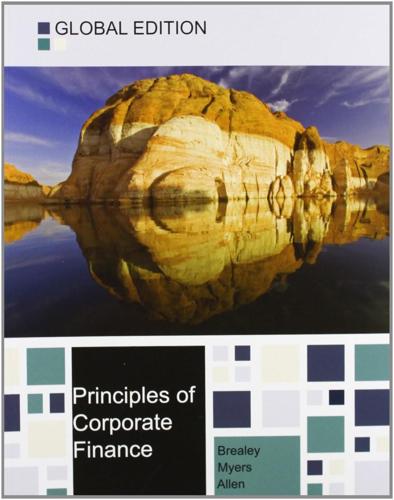
Principles of Corporate Finance
by
Richard A. Brealey
,
Stewart C. Myers
and
Franklin Allen
Published 15 Feb 2014
Useful books and reviews on the equity risk premium include: B. Cornell, The Equity Risk Premium: The Long-Run Future of the Stock Market (New York: Wiley, 1999). P. Fernandez, J. Aguirreamalloa, and L. C. Avendaño, “Market Risk Premium Used in 82 Countries in 2012: A Survey with 7,192 Answers,” June 13, 2012. Available at http://ssrn.com/abstract=2084213. W. Goetzmann and R. Ibbotson, The Equity Risk Premium: Essays and Explorations (Oxford University Press, 2006). R. Mehra (ed.), Handbook of Investments: Equity Risk Premium 1 (Amsterdam, North-Holland, 2007). R. Mehra and E. C. Prescott, “The Equity Risk Premium in Prospect,” in Handbook of the Economics of Finance, eds.
…
This is difficult to reconcile with high risk aversion and a high market risk premium. There is an active research literature on this “equity premium puzzle.” See R. Mehra, “The Equity Premium Puzzle: A Review,” Foundations and Trends in Finance® 2 (2006), pp. 11–81, and R. Mehra, ed., Handbook of the Equity Risk Premium (Amsterdam: Elsevier Handbooks in Finance Series, 2008). 12It is difficult to interpret the responses to such surveys precisely. For example, one is conducted every quarter by Duke University and CFO magazine and reported on at www.cfosurvey.org. On average since inception CFOs have predicted a 10-year return on U.S. equities of 3.7% in excess of the return on 10-year Treasury bonds.
…
However, respondents appear to have interpreted the question as asking for their forecast of the compound annual return. In this case the comparable expected (arithmetic average) premium over bills is probably 2 or 3 percentage points higher at about 6%. For a description of the survey data, see J. R. Graham and C. Harvey, “The Long-Run Equity Risk Premium,” Finance Research Letters 2 (2005), pp. 185–194. 13This possibility was suggested in P. Jorion and W. N. Goetzmann, “Global Stock Markets in the Twentieth Century,” Journal of Finance 54 (June 1999), pp. 953–980. 14We are concerned here with the difference between the nominal market return and the nominal interest rate.
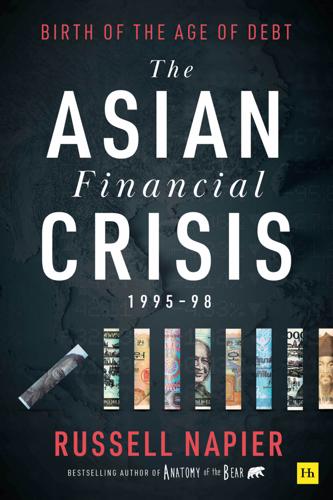
The Asian Financial Crisis 1995–98: Birth of the Age of Debt
by
Russell Napier
Published 19 Jul 2021
Market movements across Asia suggest that this new reality is already beginning to be priced into equity markets. So how far are we from fair value? The honest answer is that it is difficult to tell. When historical returns have been so comprehensively distorted by a degree of monetary illusion, it will always be difficult to correctly adjudge future value. However, using the historical equity risk premium over the past five to seven years and using the domestic risk-free rate, Table 2.6 shows the implied terminal rate of dividend growth currently priced into equity markets. Table 2.6: Implied terminal rate of dividend growth priced into equity markets Hong Kong 21.1% Indonesia 18.3% India 21.9% Malaysia 14.7% Philippines 22.6% Singapore 2.5% Taiwan 16.3% Thailand 8.1% Asian corporates in these countries have to be capable of producing these levels of long-term earnings growth to be considered fair value.
…
It is important to stress that the mathematics of value themselves have been distorted by the money mania of yesterday and it can be argued either way whether this means that the above implied growth rates are too high or too low. Money mania probably boosted the performance of equities, thus raising the equity risk premium, but it probably also inflated historical growth rates etc. However, Table 2.6 might give some indication that when it comes to PE analysis, “there are more things in heaven and earth, Horatio, than are dreamt of in your philosophy” (Shakespeare, Hamlet). Whatever the outcome of the current battle of the baht, yesterday will probably be remembered in the history of the Asian equity markets as ‘The day the PE died’.
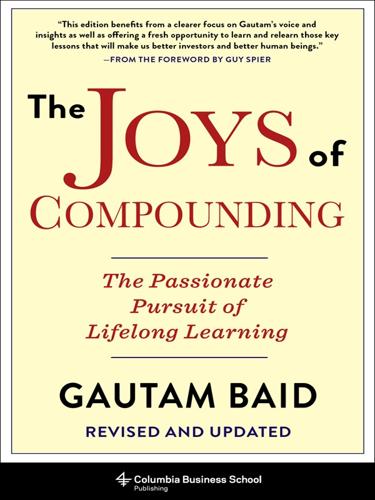
The Joys of Compounding: The Passionate Pursuit of Lifelong Learning, Revised and Updated
by
Gautam Baid
Published 1 Jun 2020
(This is very much what scientists do. They approach a problem and its solution by trying to prove it is false, not that it is true.) In investing, risk comes from not knowing what you are doing. In fact, Buffett considers this to be one of the biggest risks in investing. So much so that he avoids using equity risk premiums to value stocks, confining himself only to those situations about which he is highly certain. Buffett uses the interest rate of long-term U.S. Treasury bonds to value stocks, except when he believes it is artificially low. During those times, he adds a few percentage points to his discount rate.
…
It is human nature to seek instant gratification, and the market is dominated by individuals who simply do not want to wait for much larger rewards several years down the line. As a result, many investors end up engaging in “hyperbolic discounting,” heavily discounting the distant but large cash flows of high-quality businesses by applying high equity risk premiums, and they end up with much lower estimates of intrinsic business value than otherwise would have been the case. Consequently, even though those businesses may be fairly valued in the short term, they end up becoming grossly undervalued on a long-term basis. Professor Sanjay Bakshi illustrated this anomaly in his seminal October 2013 white paper on how quality businesses frequently end up getting mispriced by the market.19 (Any stock that has compounded at 15 percent to 20 percent for decades was, by definition, undervalued by the market for long periods of time.)

Adaptive Markets: Financial Evolution at the Speed of Thought
by
Andrew W. Lo
Published 3 Apr 2017
We can confirm the impact of volatility cruise control on performance in figure 8.7, which compares the cumulative return of a $1 investment in the raw index versus the volatility-controlled index. Over the eighty-nine-year period, the volatility-controlled index is the winner by a factor of four. By reducing equity exposure when volatility is high, the risk-managed benchmark holds more cash when the equity risk premium is lower than average, and it holds more equity when the equity risk premium is higher than average, exploiting the inverse relationship between stock prices and volatility documented by Black over four decades ago. Figure 8.7. Cumulative return of the CRSP value-weighted index with (gray) and without (black) dynamic volatility management from January 25, 1926, to December 31, 2014 (logarithmic scale).
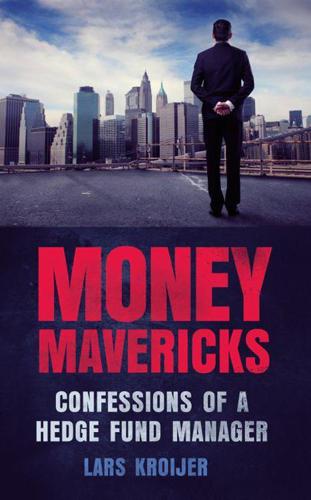
Money Mavericks: Confessions of a Hedge Fund Manager
by
Lars Kroijer
Published 26 Jul 2010
In terms of estimating future risk we can use the VIX index for the US market. Since other markets do not have a similar index, we can reasonably use the historical volatility relative to that of the USA for each market and multiply that by the current VIX. For expected returns we can take typical historical equity risk premium, like 4 per cent annually, apply that to the US market, and have the return expectation of other markets be dependent on its risk relative to the US market. Again, a fairly non-controversial assumption set. In the absence of a market for correlation, and with a desire to keep things simple, we can use trailing monthly correlations going three years back.
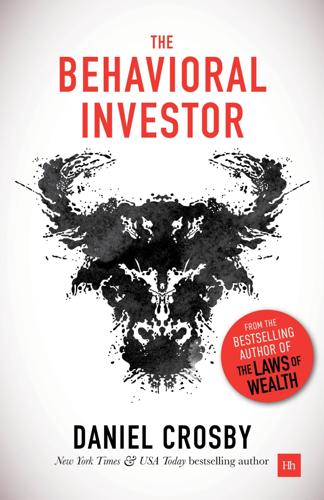
The Behavioral Investor
by
Daniel Crosby
Published 15 Feb 2018
In markets as in life, people tend to evaluate risk in terms of short-term harm rather than long-term reward. Stocks undoubtedly offer the potential for short-term harm, despite the fact that they have been enormously predictable and rewarding over time. By privileging today over tomorrow and certain mediocrity over possible greatness, fearful investors provide behavioral investors with an equity risk premium that is improbably large. This premium can be earned by doing the opposite: by privileging tomorrow over today. Buy what you (don’t) know If I asked you to name the single most famous painting of all time, which would you choose? Odds are that many readers would have landed on DaVinci’s Mona Lisa, arguably the most iconic piece of art in the world.

The Greed Merchants: How the Investment Banks Exploited the System
by
Philip Augar
Published 20 Apr 2005
Morgan Stanley Annual Report 2002, p. 3. 18. SIA Fact Book 2003, p. 36. 19. SIA Fact Book 2003, pp. 36 and 109; 2004, pp. 32 and 105. 20. Hintz, op. cit., p. 10. 21. Under the CAPM cost of equity is calculated by adding the risk free rate of return (the yield on ten-year Treasuries, say 4 per cent) to the equity risk premium (the amount equity investors require to compensate for the extra risk they accept, a number calculated by academics, say 3 per cent) and multiplying the total by a factor known as beta. Beta measures the volatility of a company’s share price and its correlation with the market as a whole. Richard Barker, Determining Value (Pearson Education, 2001), pp. 45–8; Wasserstein, Bruce, Big Deal (Warner Books, 2000), pp. 609–11. 22.

Restarting the Future: How to Fix the Intangible Economy
by
Jonathan Haskel
and
Stian Westlake
Published 4 Apr 2022
The figure also shows an average rate of return for the business sector, which, interestingly, rose but then fell back to where it was. So, returns on safe assets have been falling, whilst those on business investment remained about the same, which means the “spread” between the two is rising. Other measures such as the spread between bank deposit and lending rates, corporate bond spreads, and equity risk premiums also increased over this period.37 FIGURE 5.1: Yields on Safe Assets and Capital, 1995–2015. Note: Lines are exchange-rate-adjusted nominal GDP weighted averages of countries: Austria, Czech Republic, Germany, Denmark, Finland, France, Italy, Netherlands, Sweden, the United Kingdom, and the United States.
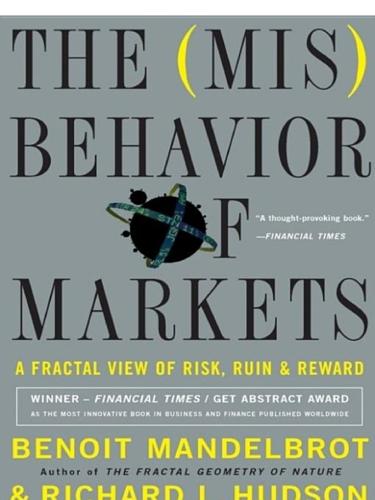
The Misbehavior of Markets: A Fractal View of Financial Turbulence
by
Benoit Mandelbrot
and
Richard L. Hudson
Published 7 Mar 2006
The stock market, by contrast, is risky and exciting; in the same period, the Standard & Poor’s 500 stocks have paid an average 13 percent, but with huge swings around that average, through bear and bull, crash and boom. The gap between the average stock-market and T-bill profits is what economists call the equity risk premium. Think of it is as the price the stock market must pay to lure people’s money away from safe banks and government bonds. Now look at an individual stock. One that tracks the market—is exactly correlated with it—will pay no more nor less than the market overall. But a stock that plummets 4 percent when the market falls 2 percent is unattractive.
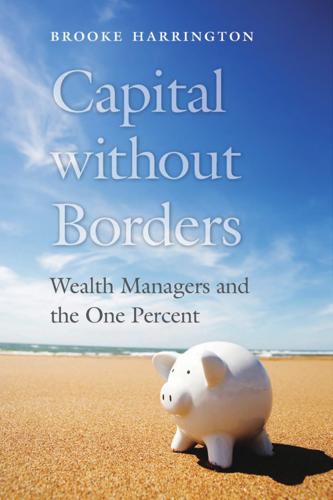
Capital Without Borders
by
Brooke Harrington
Published 11 Sep 2016
David Cay Johnston, “Costly Questions Arise on Legal Opinions for Tax Shelters,” New York Times, February 9, 2003. 74. Karen Burke and Grayson McCouch, “COBRA Strikes Back: Anatomy of a Tax Shelter,” Tax Lawyer 62 (2008): 64–65. 75. Michael Parkinson, Trustee Investment and Financial Appraisal, 4th ed. (Birmingham, UK: Central Law Training, 2008). For the seminal work on the “equity risk premium” theory, see Franco Modigliani and Merton Miller, “The Cost of Capital, Corporation Finance and the Theory of Investment,” American Economic Review 48 (1958): 261–297. 76. Pinçon and Pinçon-Charlot, Grand Fortunes. 77. David Golumbia, “High-Frequency Trading: Networks of Wealth and the Concentration of Power,” Social Semiotics 23 (2013): 1–22.
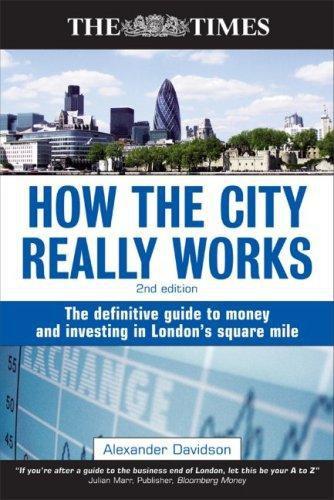
How the City Really Works: The Definitive Guide to Money and Investing in London's Square Mile
by
Alexander Davidson
Published 1 Apr 2008
The cost of equity, which is part of WACC, is the expected return on equity, which is most often measured by the Capital Asset Pricing Model (CAPM). The CAPM finds the required rate of return on a stock by comparing its performance with the market. It expresses this return as equal to the riskfree rate of return plus the product of the equity risk premium and the stock’s beta. The beta measures the sensitivity of a share price to movements in the general stock market. The CAPM stipulates that the market does not reward investors for taking unsystematic (company-specific) risk because it can be eliminated through diversification. The model is theoretical and is based on various assumptions, including no taxes or transaction costs.
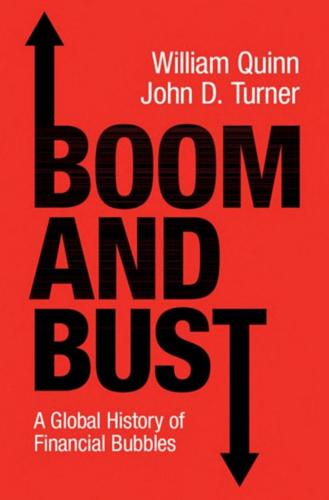
Boom and Bust: A Global History of Financial Bubbles
by
William Quinn
and
John D. Turner
Published 5 Aug 2020
Some of this advice came too early: Fortune, for example, ran an article reporting the willingness of policemen and baristas to offer stock recommendations as early as April 1996.28 But other advice was well timed, and used arguments that have since aged well. Martin Wolf of the Financial Times argued in December 1998 that US equity prices were ‘unsustainable’, and stressed the need to anchor valuations to a realistic estimate of the equity risk premium.29 Near the peak of the boom, The Economist published an article disputing the validity of several common arguments that tried to justify the level of share prices, concluding that share prices assumed ‘an implausible rate of growth in profits’.30 Most narratives of the dot-com era date the end of the bubble to the spring of 2000; Rory Cellan-Jones, for example, calls 14 March ‘the day the bubble burst’.31 The next month saw a series of dramatic falls in price: between 10 and 14 April the NASDAQ fell by 25 per cent, a record for a single trading week, while the S&P 500 fell by 10 per cent.32 Even those sceptical of technology stocks were caught out by the speed of the drop.
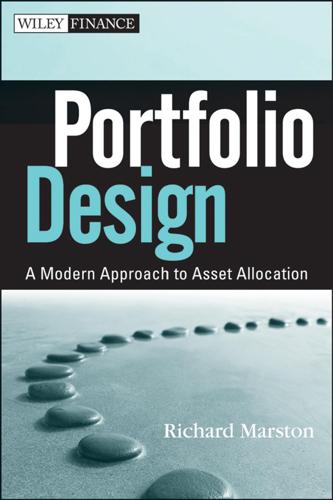
Portfolio Design: A Modern Approach to Asset Allocation
by
R. Marston
Published 29 Mar 2011
An alpha of +1.1 percent for the Russell 1000 Value index reflects not only superior returns for value over growth, but also a lower portfolio risk (as measured by beta). Value looks even more impressive relative to growth when the two are compared in terms of beta and alpha. P1: a/b c04 P2: c/d QC: e/f JWBT412-Marston T1: g December 8, 2010 64 17:32 Printer: Courier Westford PORTFOLIO DESIGN As in the case of the equity risk premium, researchers have searched for reasons why value stocks outperform growth stocks on a risk-adjusted basis. An interesting approach is provided by a study by Campbell and Vuolteenaho (2004).5 They distinguish between good beta, the volatility of stocks due to changes in the market’s discount rates, and bad beta, the volatility of stocks due to changes in the market’s cash flows.

The Ascent of Money: A Financial History of the World
by
Niall Ferguson
Published 13 Nov 2007
There is a significantly higher probability that the average corporation will go bankrupt and cease to exist than that the average sovereign state will disappear. In the event of a corporate bankruptcy, the holders of bonds and other forms of debt will be satisfied first; the equity holders may end up with nothing. For these reasons, economists see the superior returns on stocks as capturing an ‘equity risk premium’ - though clearly in some cases this has been a risk well worth taking. The Company You Keep Behind the ornate baroque façade of Venice’s San Moise church, literally under the feet of the tens of thousands of tourists who visit the church each year, there is a remarkable but seldom noticed inscription: HONORI ET MEMORIAL JOANNIS LAW EDINBURGENSES REGII GALLIARUM AERARII PREFECTI CLARISSIMA ‘To the honour and memory of John Law of Edinburgh.
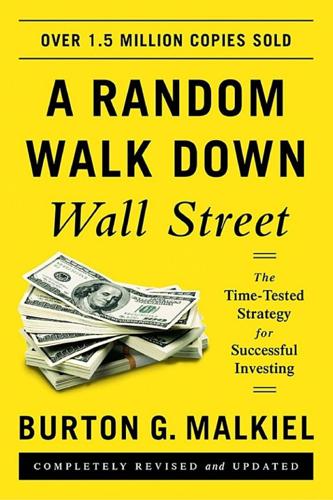
A Random Walk Down Wall Street: The Time-Tested Strategy for Successful Investing (Eleventh Edition)
by
Burton G. Malkiel
Published 5 Jan 2015
But even if price setting was always determined by rational profit-maximizing investors, prices can never be “correct.” Suppose that stock prices are rationally determined as the discounted present value of all future cash flows. Future cash flows can only be estimated and are never known with certainty. There will always be errors in the forecasts of future sales and earnings. Moreover, equity risk premiums are unlikely to be stable over time. Prices are, therefore, likely to be “wrong” all the time. What the EMH implies is that we never can be sure whether they are too high or too low at any given time. Some portfolio managers may correctly determine when some prices are too high and others too low.

Culture and Prosperity: The Truth About Markets - Why Some Nations Are Rich but Most Remain Poor
by
John Kay
Published 24 May 2004
The settlement with Proctor and Gamble was only one of several pieces of litigation that engulfed Bankers Trust. In 1995, its chief executive, Charles S. Sanford, retired early, outstanding suits were settled, and the bank was subsequently absorbed into Deutsche Bank. The story ofLTCM is told by Lowenstein (2000). This is the undiversifiable risk for which the equity risk premium is the reward. Arrown (1971) is a seminal discussion of moral hazard and adverse selection. The proportion of single women in the u.s.n who are mothers doubled between 1970 and 2000. Adams (1995), 12-13. Barth (1991), White (1991), Calavita et al. (1997). Including Charles Keating. Shleifer and Summers (1988).
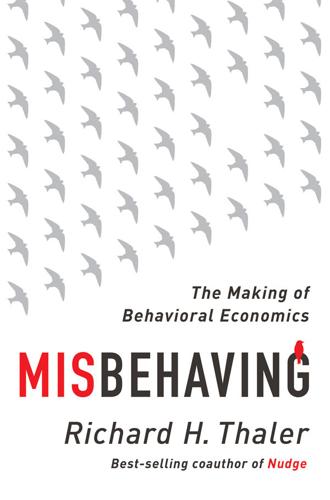
Misbehaving: The Making of Behavioral Economics
by
Richard H. Thaler
Published 10 May 2015
For his thesis, Werner wanted to take a hypothesis from psychology and use it to make a prediction about some previously unobserved effect in the stock market. There were easier things to try. For instance, he might have offered a plausible behavioral explanation for some already observed effect in the stock market, as Benartzi and I had done when trying to explain why stocks earn much higher returns than bonds (the equity risk premium). But the problem with a new explanation for an old effect is that it’s hard to prove your explanation is correct. Take, for example, the fact of high trading volume in security markets. In a rational world there would not be very much trading—in fact, hardly any. Economists sometimes call this the Groucho Marx theorem.
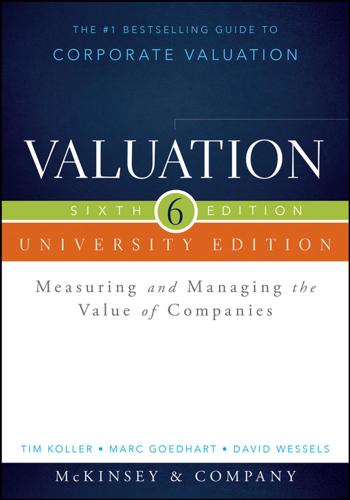
Valuation: Measuring and Managing the Value of Companies
by
Tim Koller
,
McKinsey
,
Company Inc.
,
Marc Goedhart
,
David Wessels
,
Barbara Schwimmer
and
Franziska Manoury
Published 16 Aug 2015
Even with the best statistical techniques, however, this number is probably too high, because the observable sample includes only countries with strong historical returns.5 Statisticians refer to this phenomenon as survivorship bias. Zvi Bodie writes, “There were 36 active stock markets in 1900, so why do we only look at two, [the UK and 3 E. Dimson, P. Marsh, and M. Staunton, “The Worldwide Equity Premium: A Smaller Puzzle,” in Hand- book of Investments: Equity Risk Premium, ed. R. Mehra (Amsterdam: Elsevier Science, 2007). 4 D. C. Indro and W. Y. Lee, “Biases in Arithmetic and Geometric Averages as Estimates of Long-Run Expected Returns and Risk Premia,” Financial Management 26, no. 4 (Winter 1997): 81–90; and M. E. Blume, “Unbiased Estimators of Long-Run Expected Rates of Return,” Journal of the American Statistical Association 69, no. 347 (September 1974): 634–638. 5 S.
…
Research shows that the U.S. arithmetic annual return exceeded a 17-country composite return by 0.8 percent in real terms.5 If we subtract an 0.8 percent survivorship premium from our range presented earlier, this leads to an expected return between 5.0 percent and 5.5 percent. 5 E. Dimson, P. Marsh, and M. Staunton, “The Worldwide Equity Premium: A Smaller Puzzle,” in Hand- book of Investments: Equity Risk Premium, ed. R. Mehra (Amsterdam: Elsevier Science, 2007). Index A Accelerated depreciation, 405 Accounting: changes and irregularities in, 218–219 financial institutions (see Banks) goodwill amortization, 621 mergers and acquisitions (M&A), 621–623 statements (see Financial statements) Accounting standards.
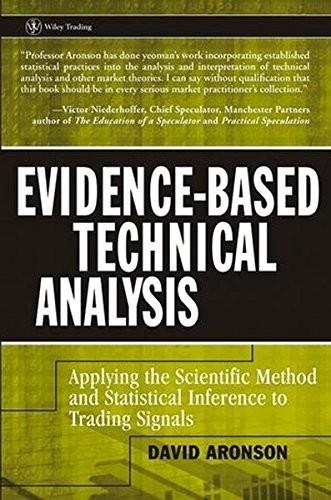
Evidence-Based Technical Analysis: Applying the Scientific Method and Statistical Inference to Trading Signals
by
David Aronson
Published 1 Nov 2006
The stock and bond markets provide companies with a mechanism to obtain equity and debt financing99 and provide investors with a way to invest their capital. Because stocks and corporate bond investments expose investors to risks that exceed the risk-free rate (government treasury bills), investors are compensated with a risk premium—the equity risk premium and the corporate-bond risk premium. The economic function of the futures markets has nothing to do with raising capital and everything to do with price risk. Price changes, especially large ones, are a source of risk and uncertainty to businesses that produce or use commodities. The futures markets provide a means by which these businesses, called commercial hedgers, can transfer price risk to investors (speculators).
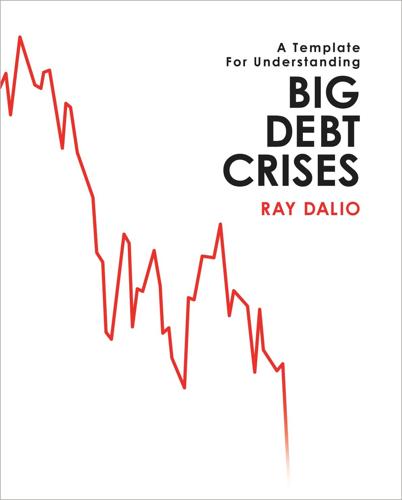
Big Debt Crises
by
Ray Dalio
Published 9 Sep 2018
It typically takes roughly 5 to 10 years (hence the term “lost decade”) for real economic activity to reach its former peak level. And it typically takes longer, around a decade, for stock prices to reach former highs, because it takes a very long time for investors to become comfortable taking the risk of holding equities again (i.e., equity risk premiums are high). Now that you have this template for deflationary depressions in mind, I encourage you to read the detailed accounts of the US 2007–2011 and 1928–1937 big debt cycles shown in Part 2 and then look at the summary statistics and auto-text of the 21 case studies shown in Part 3. * * * 3.

Money Changes Everything: How Finance Made Civilization Possible
by
William N. Goetzmann
Published 11 Apr 2016
William Sharpe worked with Wells Fargo in San Francisco to develop low-cost index products that echoed his CAPM market portfolio. On the East Coast, the Vanguard company offered its Market Index Trust in 1976 to match (not beat) the market with very low management fees. It was based on the principle of capturing the equity risk premium and relied on the long-term historical evidence of S&P 500 returns as a motivation. By indexing, you could earn the same long-term return measured and predicted by the Ibbotson-Sinquefield studies. It made long-term planning and investment really simple. Choose a cheap, generic brand and avoid the risk of picking a lousy manager.
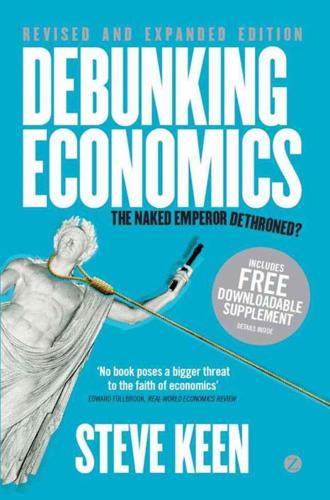
Debunking Economics - Revised, Expanded and Integrated Edition: The Naked Emperor Dethroned?
by
Steve Keen
Published 21 Sep 2011
(McKibbin and Stoeckel 2009: 584; emphases added) As with Ireland, they manipulate the shocks applied to their model until its short-run deviations from the steady state mimic what occurred during the Great Recession, and as with Ireland, one shock is not enough – three have to be used: 1 the bursting of the housing bubble, causing a reallocation of capital and a loss of household wealth and drop in consumption; 2 a sharp rise in the equity risk premium (the risk premium of equities over bonds), causing the cost of capital to rise, private investment to fall, and demand for durable goods to collapse; 3 a reappraisal of risk by households, causing them to discount their future labor income and increase savings and decrease consumption. (Ibid.: 587) Not even this was enough to replicate the data: they also needed to assume that two of these ‘shocks’ – the risk tolerances of business and households – changed their magnitudes over the course of the crisis.
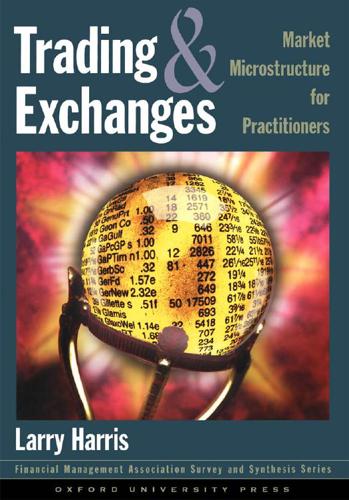
Trading and Exchanges: Market Microstructure for Practitioners
by
Larry Harris
Published 2 Jan 2003
When sentiment changes, the bubble will burst and prices will fall extremely quickly. ◀ * * * Successful sentiment-oriented technical traders may trade successfully in instruments whose values depend on difficult-to-measure fundamental factors. The three most important such factors are expected inflation, future political uncertainty, and the equity risk premium. Stock, bond, and precious metal values depend crucially on these factors. Since these factors are very hard to measure, value traders do not know well the fundamental values of instruments whose values depend on them. Uninformed traders therefore may significantly affect prices in these instruments.